Elizabeth I-England's greatest Queen
I only focused on the Elizabeth's I am a descendant to which were Elizabeth Woodville and Elizabeth of York but after the death of Elizabeth II, I have been working on my family tree a lot lately on this side. And while these Elizabeth's are not my ancestors, I decided I will go back to this book and do some research on these great Queens of England. Neither of them may not have been my direct ancestors but in a way, they were still family. Elizabeth I, being the daughter of my direct ancestor Henry VIII and a half sister to my ancestor who was an illegitimate son, Richard Edwards. The Current Monarch would still be "family" even though they are very distant and if there was an unexpected death to all of them or some of them give up the throne, there would be a very small chance that I could become Queen of the commonwealth. It's really interesting to think about but I am glad I am not in the line of succession where I could become Queen. I love my private life and wouldn't want the responsibility of guiding a country.
Now without further ado, this chapter is about Elizabeth I.
It's July 1588. Massive Amada under the flag of King Philip II of Spain surges up the channel with the aim of bringing Protestant England back under the sway of the Papacy. On the 29th Battle is joined with an English fleet, and not knowing if her sailors are victories, on the 8th of August, The Queen of England parades in front of her troops at Tilbury in Essex, where she will give a speech that will echo down the centuries.
I know I have a body of a weak and feeble woman, but I have a heart and stomach of a king.
Her name, Elizabeth I, England's greatest Queen.
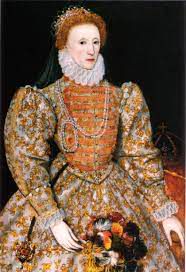
The woman known to history as Elizabeth Tudor, Queen Elizabeth I of England, was born on the 7th of September 1533 at the palace of Greenwich, near London. Her father was King Henry VIII of England.
Henry VIII of England
1491-1547 (Reign 1509-1547)
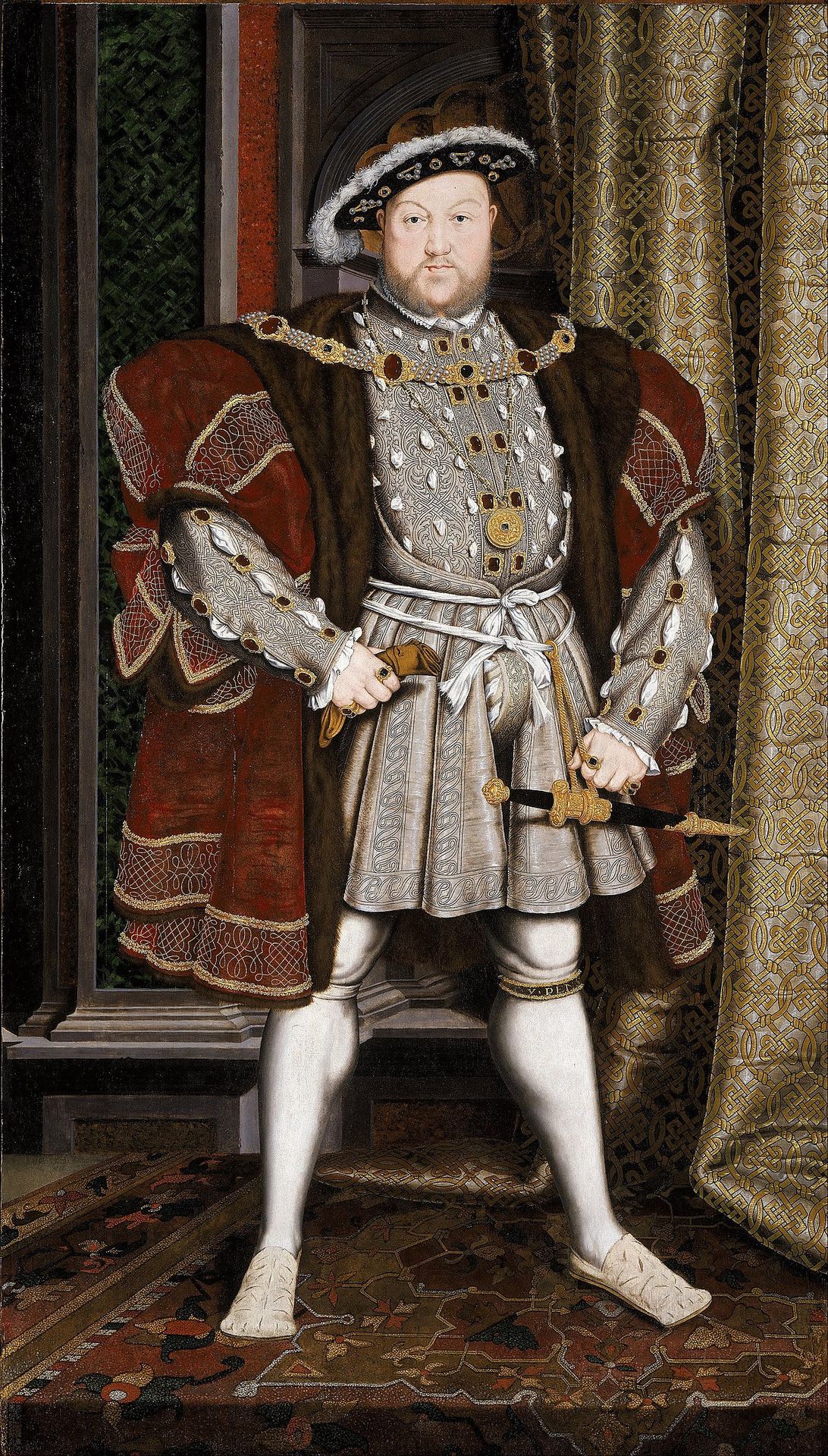
Second son of Henry Tudor and Elizabeth of York. Who in their marriage have joined the houses of York and Lancaster after Henry's victory at the Battle of Bosworth in the Wars of the Roses. Elizabeth's mother was Queen Anne Boleyn, the daughter of diplomat Thomas Boleyn and Lady Elizabeth Howard and is now known to history as the infamous second wife of Henry VIII. King Henry VIII moved heaven and earth to marry her.
Anne Boleyn
1507-1536 (Reign 1533-1536)
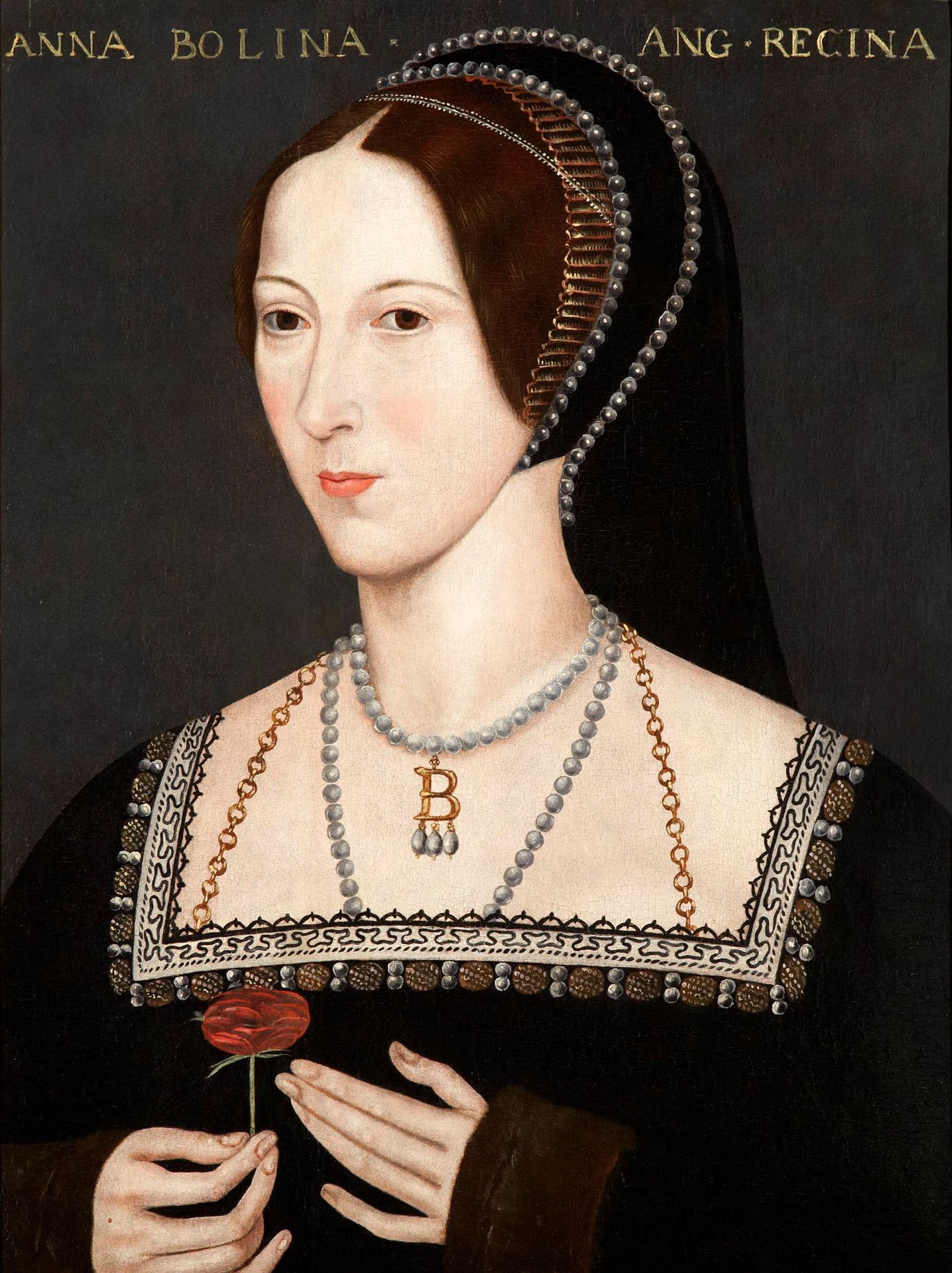
Elizabeth's parents, the King and Queen, had hoped for a son. Despite her gender, Elizabeth's birth was celebrated, and they hoped that there will be a son eventually. She was proclaimed, Princess of England at her christening. It was originally her half-sister's Mary's title. Henry divorced Mary's mother and his first wife, Catherine of Aragon.
Catherine of Aragon
1485-1536 (Reign 1509-1533)
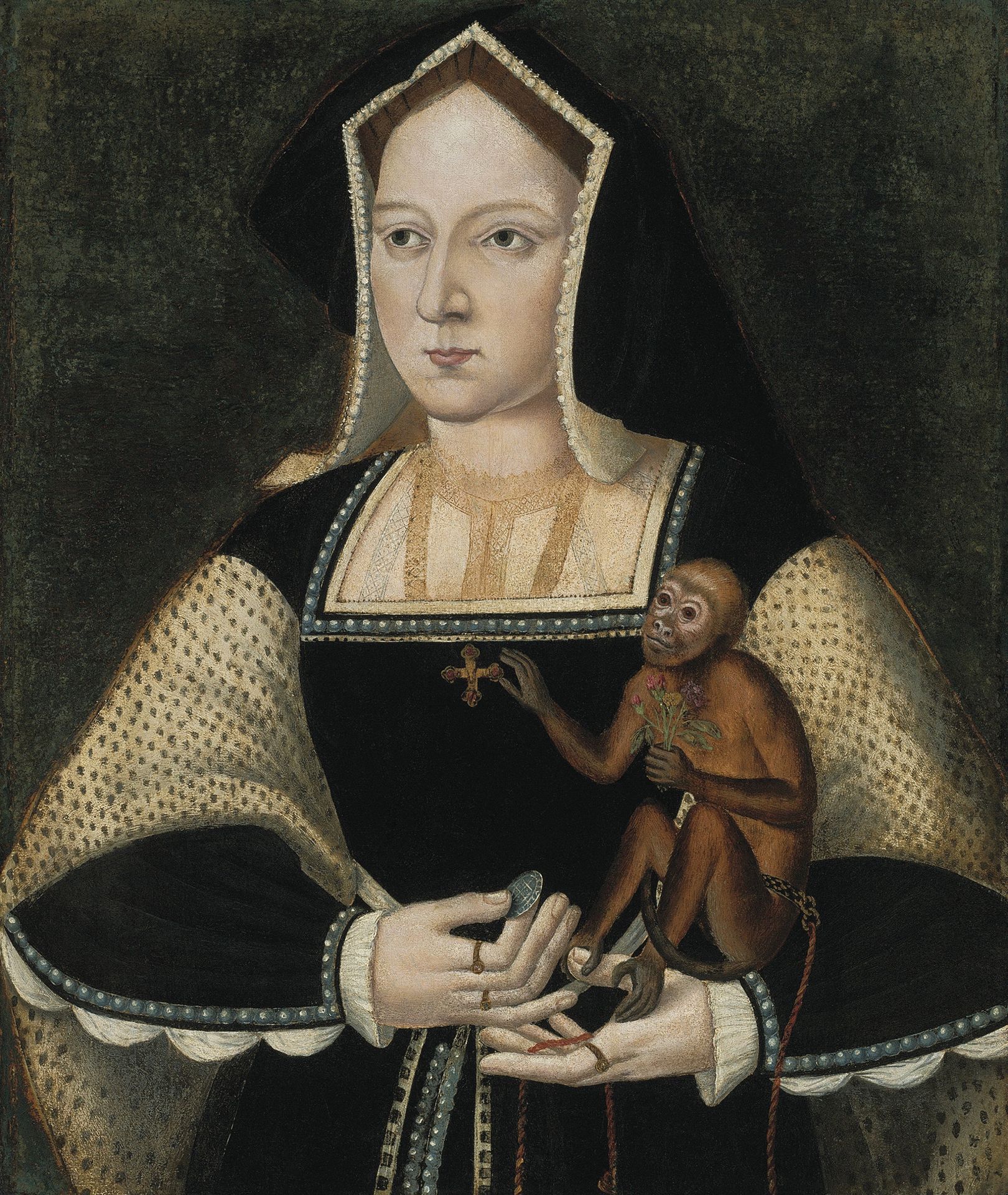
In December of 1533, the three months old Elizabeth was established in her own royal household, primary at Hatfield.
Hatfield House
Hatfield, Hertfordshire

Having divorced Mary's mother and render her illegitimate, Henry had demanded that she recognize her own illegitimacy. Mary refused to do so. Elizabeth was now Henry's new heir. Henry had set his two daughters on the path of rivalry. Mary resented her younger sister. Mary's stepmother gave her bad treatment too. Mary refused to recognized Anne Boleyn as Queen or Elizabeth as the heir. She was physically punished if she tried to claim the privileges of a princess. When King Henry visited Elizabeth, he orders everyone to keep Mary confined to her rooms, so he does not have to see or speak to her. This pattern continued for nearly three years.
Mary I of England
1516-1558 (Reign 1553-1558)

Elizabeth was only a baby unable to recognize anyone as her enemy, and while her mother loved her and her father shown a fondness for her, she was in a sense little more than a gaming piece. A placeholder for a male heir, her father still hoped to have, and that reality was heavily underscored in May of 1536. Henry had Anne Boleyn executed for charges of adultery, incest. and treason.
It is likely that, Anne's only real sin was her failure of producing a son. Elizabeth was not yet three years old when her mother was beheaded. Henry claimed that he had entered into the marriage, seduced by witchcraft.
Thomas Cromwell
1489-1556
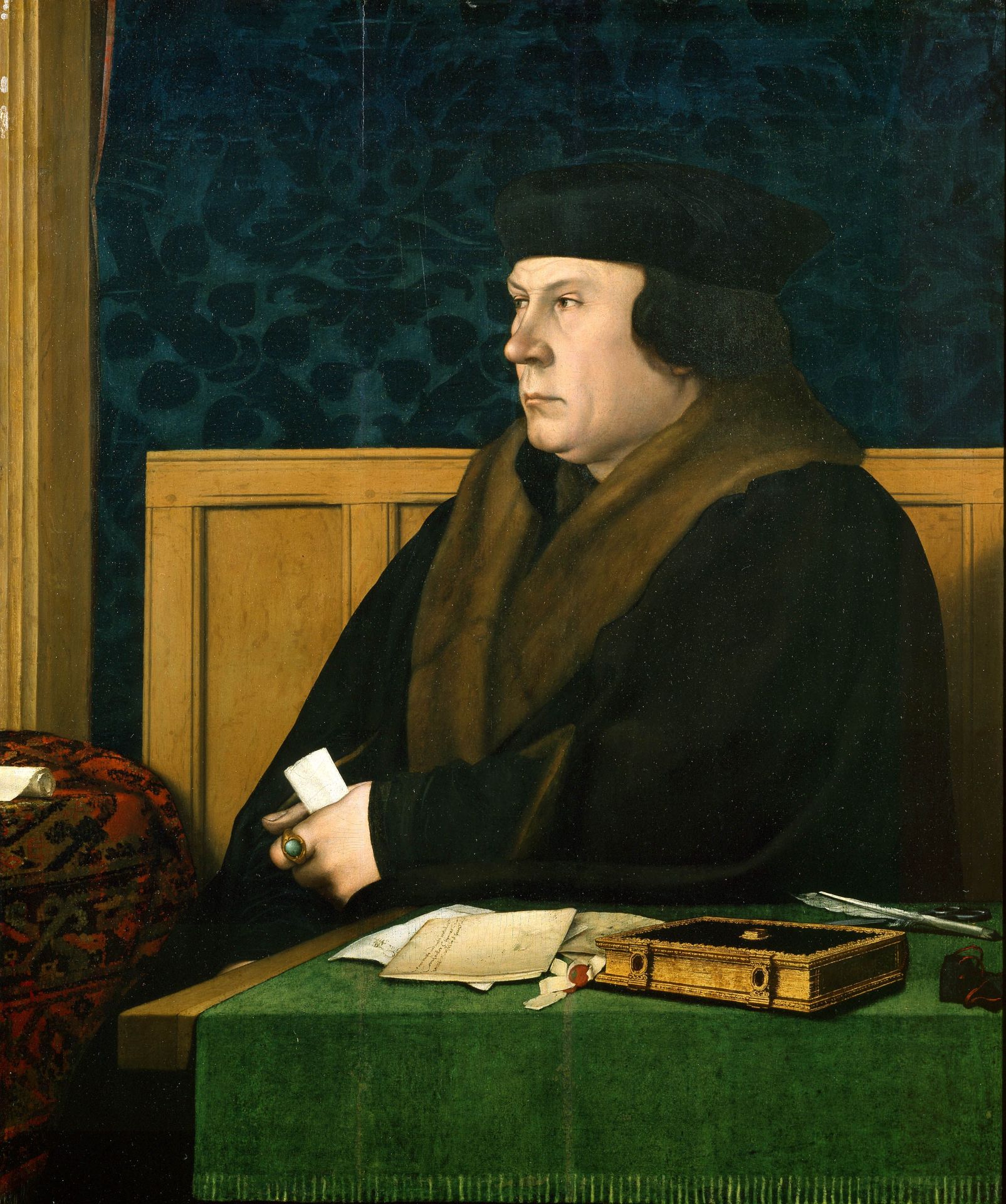
Thomas admired Anne and was Elizabeth's godfather. He was tasked of given Henry another annulment. Which would render the little Princess, illegitimate. Within two weeks of Anne Boleyn's death, Henry was married to his third wife. Jane Seymour, and soon he ceased supporting Elizabeth's household.
Then in July of 1536, parliament conformed the succession act which stated that Henry's marriage to Anne Boleyn had been invalid. This act explicitly recognized both of his daughters for the first time, as officially illegitimate. During the same month, Mary finally submitted to Henry on the matter of her parents' marriage, the Act of Succession, and regarding the Act of Supremacy, which acknowledged the King as head of the church in England and despite the fact that Henry, had threatened Mary's life for refusing to sign the oath, via his secretary Thomas Cromwell. He welcomed her back into court once she signed.
Henry had always demonstrated an attachment to his eldest daughter Mary up until the time she refused to recognize his marriage and it showed in his readiness to forgive her and once again showed her open affection, but despite her tender age, Henry made no such effort for his youngest daughter. Elizabeth's governess, Lady Bryan tried to help her by written a letter to Thomas Cromwell. She wrote that Elizabeth was growing out of her clothes quickly. There were also struggles within Elizabeth's household over the diminished finances support she was receiving, as a toddler who, by birth, outranked everyone in her household, it was hard to know how to treat Elizabeth, especially now since her mother was executed in disgraced and no one knew how Henry intended to treat her.
Elizabeth was not old enough to exercise any sort of authority and so there were conflict in the household, trying to take care of the household and Elizabeth and making sure she is still presented as a Princess. She was still not old enough to understand the change of her status.
However, it was precisely Elizabeth's new status, as well as the birth the following year of Prince Edward, that made it easier for Henry to re-integrate her into her life and the life of the court, this was because both Mary and Elizabeth are now illegitimate and so now were on more of an equal footing. Although Mary, as the older sister would once again take precedence, and indeed, Henry continues to show more affection to his older daughter then his younger, in the years to come. After when Prince Edward was born, he was the only child given his own independent princely household until Henry's death, while Mary and Elizabeth shared a combined household for the next seven years.
Edward VI of England
1537-1553 (Reign 1547-1553)

Still the change in their statuses, made a sisterly closeness more likely, and Mary as well as Queen Jane Seymour, are both credited with reintroducing the four-year-old Elizabeth to court, and persuading King Henry to restore her to favor, Henry did, but in many ways, he will continue to demonstrate that his youngest daughter, was not only last in the succession, but also in his heart. (I feel bad for Elizabeth)
Yet, out of all his children, Elizabeth would prove to be the most like her father, she resembled Henry even more then Mary did, with the same light red hair, pale skin, and ruddy cheeks, but with Anne Boleyn's brown eyes, but Elizabeth unlike her more reserved and dignified sister Mary, resembled the young Henry in that she witty, charming, and a ferocious intellectual.
Elizabeth I of England
1533-1603 (Reign 1558-1603)
Mary was highly educated and fond of scholarly pursuits, but Elizabeth proved to be one of the most brilliantly learned women in 16th century Europe. She also inherited her father's famously passionate and fiery temper and could be a difficult mistress to serve at times. Deprived of her mother at a painfully young age and her relationship with her father being what it was, Elizabeth looked elsewhere for familial closeness, mentorship, and love.
Elizabeth did develop a closeness with her younger brother, Prince Edward, most likely because she was closer in age with him then her and Mary. Elizabeth came to love her baby brother; she carried the chrisom at Edward's baptism. They shared the same tutors when it was time for their formal education and shared their lessons with one another, even writing letters to one another in Latin, and they were both raised and influenced by the same Protestant reformers.
Eliazbeth found surrogate mothers in her governess, and in a succession of her stepmothers. the Protestant German princess, Anne of Cleves, whom Henry married when Elizabeth was seven years old, took both interest and delight in Henry's youngest daughter, while her marriage to Henry only lasted for six months, Anne and Elizabeth continued to visit and write to each other following the divorce, however, Elizabeth had little time to get close to Jane Seymour or Catherine of Howard, both of whom were dead within two years of marriage with King Henry. Jane in childbirth and Catherine executed for adultery and treason, just as Elizabeth's mother had been.
Anne of Cleves
1515-1557 (Reign Jan. 1540-July 1540)
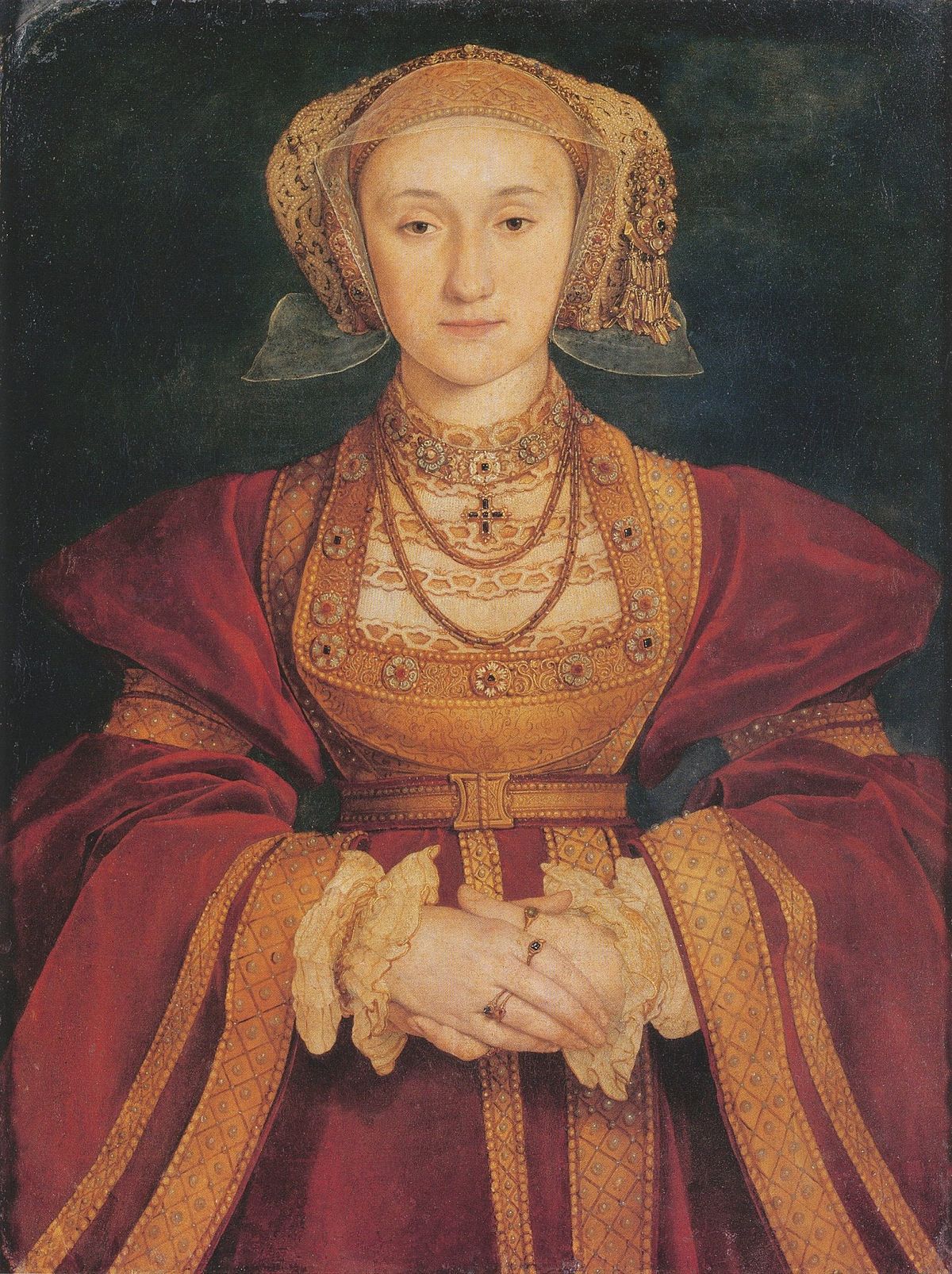
When the 19-year-old Catherine Howard, who was in fact, Anne Boleyn's cousin, was beheaded, Elizabeth drew an important lesson from it, the eight-year-old princess no doubt remembering what happened to her mother also, remarked to her a friend and schoolmate, Robert Dudley, "I shall never marry", this lesson would be reinforced over and over again, as Elizabeth grew up as she observed that married women were invariable at the mercy of their husbands, surrendering all power and self-determination to them.
Henry's sixth wife, Catherine Parr, whom Henry was married when Elizabeth was eleven years old, was also kind and motherly towards her.
Catherine Parr
1512-1548 (Reign 1543-1547)
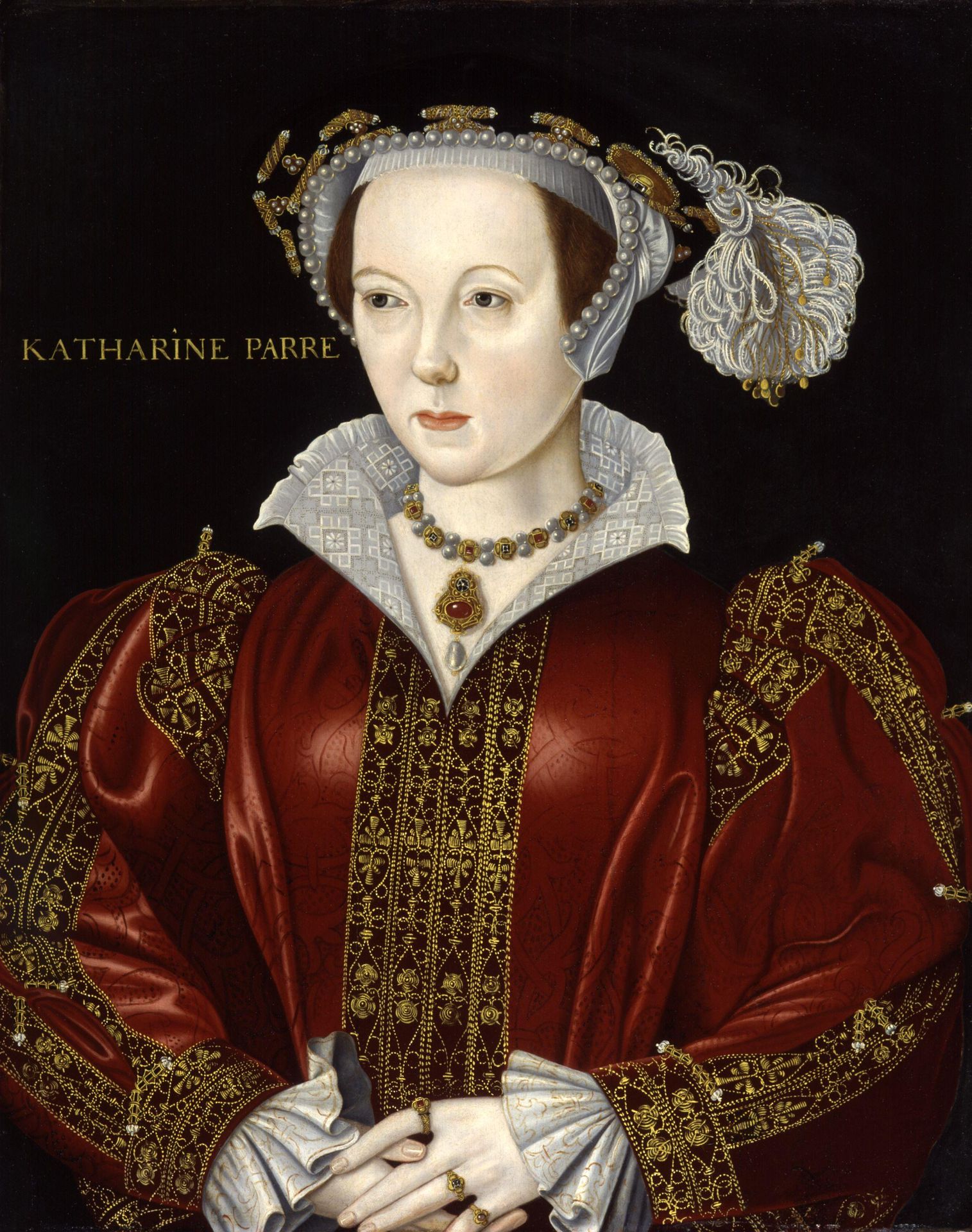
Catherine recognized the young princess's intellectual potential and encourage her in her academic pursuits, and it is Catherine Parr who is often credited with persuading Henry, to restore both Mary and Elizabeth to the line of succession for the throne, after their younger brother.
However, ultimately, it was the serving members of Elizabeth's household, most of whom were extended relations of her mother, Anne Boleyn, with whom Elizabeth found the closest and most secure sense of family, particularly her beloved governess and companion, Catherine "Cat" Ashley, who would remain with Elizabeth as lady-in-waiting when she became Queen.
Katherine Ashley
C. 1502-1565
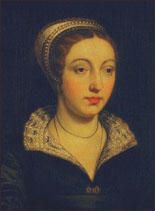
William Cecil, who would become a great stateman when Elizabeth ascended the throne, also served in the young princess household as her surveyor, an important Mantor to Elizabeth., he would remain her closest and most trusted advisor throughout her reign as Queen.
William Cecil
1520-1598
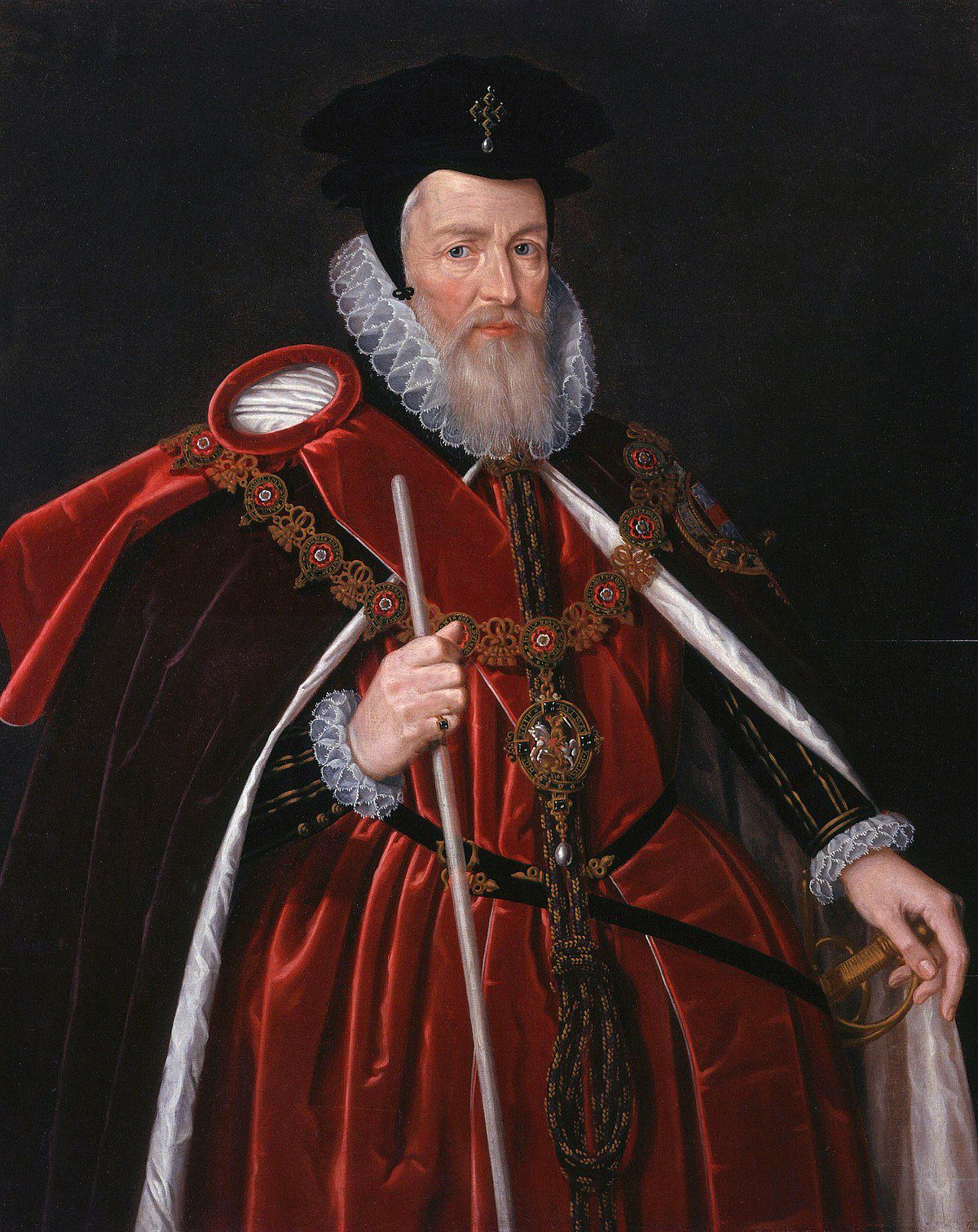
Her murky status and unconventional family life aside, Elizabeth grew up very privileged, her position as the daughter of the King, entitled her to the finest education, and Elizabeth took great joy in both learning and mastery, developing a passion for academic and intellectual pursuits that was to last her entire life.
The Old Royal Naval College, London
Site of Old Greenwich Palace, Elizabeth's birthplace.
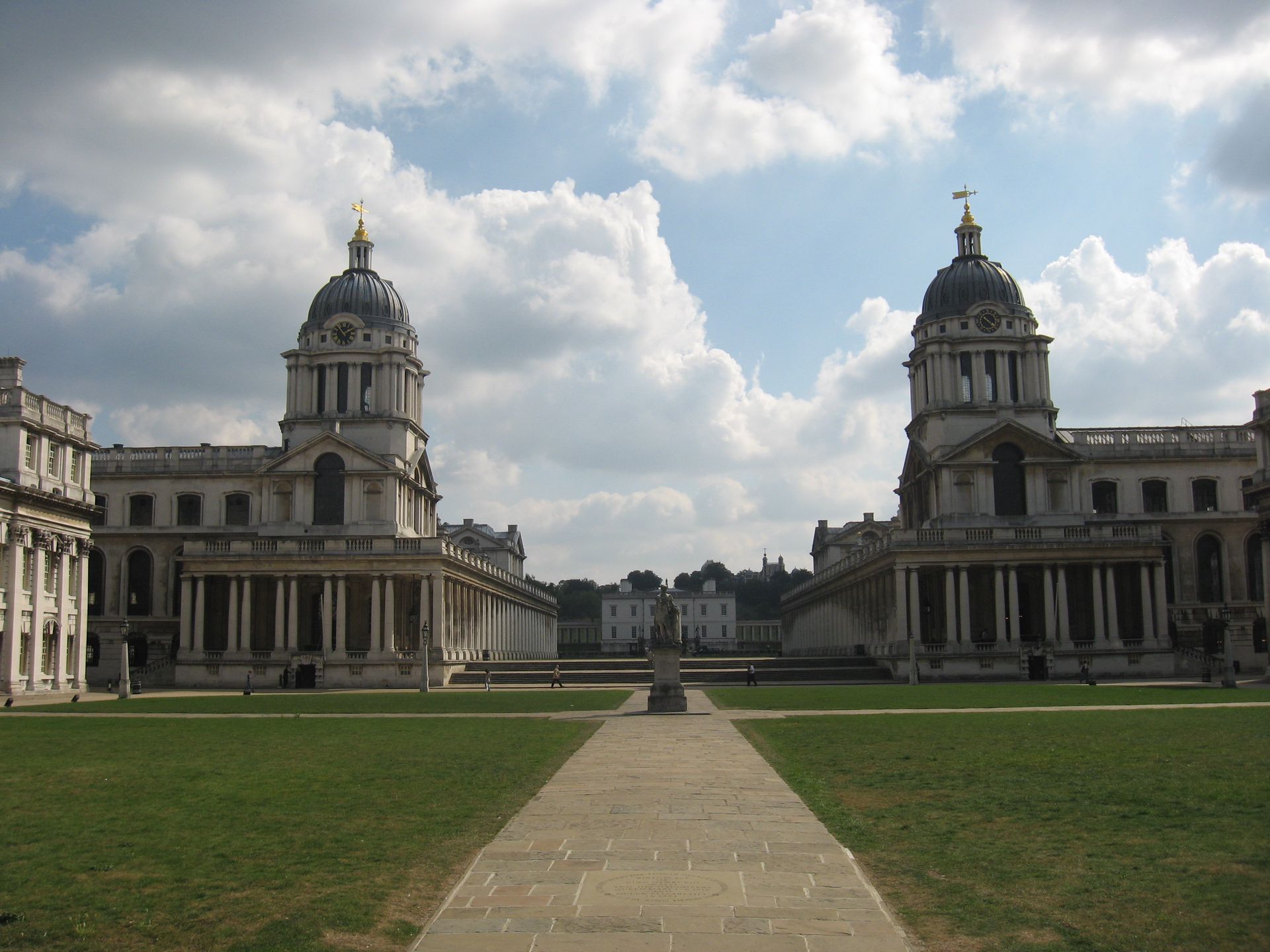
Her beloved "Cat" Ashley organized Elizabeth's foundational education, consisting largely of English grammar, logic, and rhetoric, arithmetic, music, dance, religious instruction, and varies languages including French, Dutch, Italian, and Spanish. Like her father and sister before her, Elizabeth excelled at her studies, and when she was eleven years old, the first of a series of eminent Cambridge-educated tutors took over for Mistress Ashley, to provide Elizabeth with her more formal education.
By this time, the princess was quite a force to be reckoned with academically. She can speak, write, and read fluently in Latin and Greek, in addition to the five languages already in her commend, and by the end of her life, she had also reportedly learned to speak Cornish, Welsh, and both Irish and Scottish Gaelic. She enjoyed translating both classical and contemporary texts immensely, a past time which she continued to engage in joyfully throughout her life.
In her adolescence, she personally translated classical and religious texts as new Year's gifts for her father and stepmother, Catherine Parr, inscribing herself in an exquisite calligraphy, impressive for her age, Elizabeth is often remembered for her clever and poetic turn of phrase, she both spoke and wrote elegantly and remains one of English history's most "quotable" monarchs, and despite her youth, Elizabeth was much admired by the adults around her, and even as a young teenager, Elizabeth's eloquence, logic, and rhetoric, were highly developed, and her quick wit made her both an entertaining and intimidating conversationist.
Elizabeth was 13 years old when Henry VIII died, in January of 1547, some might describe her reaction as cold, but her father's consistent distance from his youngest daughter, could hardly have made it otherwise. Elizabeth wrote to her younger brother Edward, that she was grateful not to have been at the dying Henry's bedside and seemed to prefer to confront her father's loss on a more philosophical level than an emotional one.
Henry was generous to his daughters in his will, despite their supposed illegitimacy, allowing each of them an annual income of 3,000 pounds, however, the property and movable goods given to Mary, were much more extravagant and valuable than those given to Elizabeth, and her lowest status in the Succession. Elizabeth was too young to have her own independent Houshold.
After Henry's death, nine-year-old Edward became King Edward VI, assisted by his uncle Edward Seymour, who had himself appointed Lord Protector, the thirty-one-year-old Mary, now spent most of her time at her extensive estates in East Anglia and Elizabeth was left at something of a loose end, and so her stepmother Dowager Queen Catherine Parr, invited Elizabeth to live with her and her new husband, Thomas Seymour, in their home at Chelsea, Elizabeth lived there for a little more than a year and her experience there would teach her yet more bitter, painful, and frightening lessons, that likely stayed with her for the rest of her life.
Catherine Parr's third husband, Thomas Seymour, Lord High Admiral of England and brother of Lord Protector, Edward Seymour, is now generally perceived by historians to be an impulsive man. Constantly seeking to ingratiate himself with senior members of the English court, in pursuit of greater power.
Thomas Seymour
1508-1549
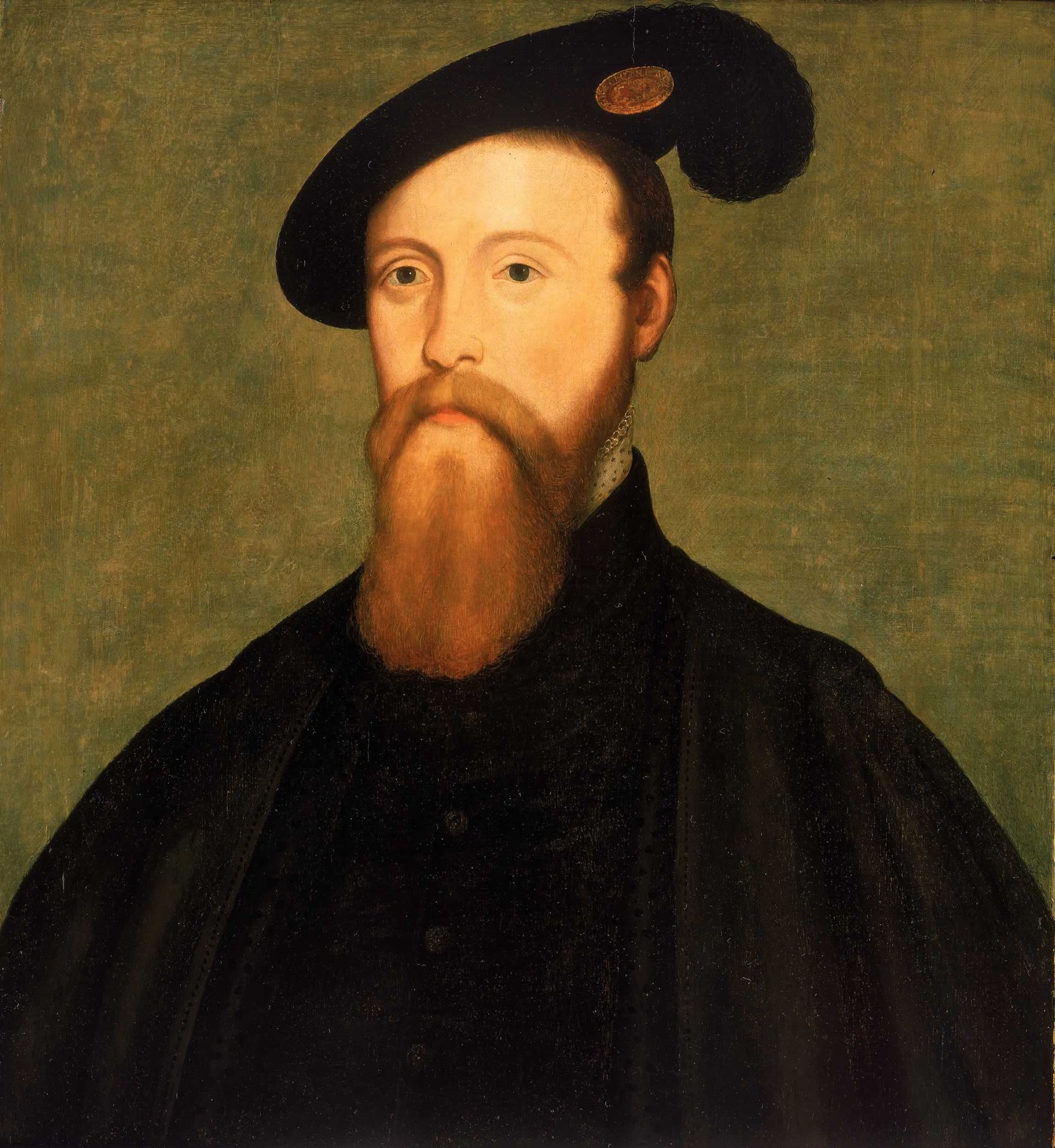
He had attempted in various ways to manipulate his young nephew, the King to have himself appointed guardian of Edward's person, and to gain his approval to marry Elizabeth. Thomas had capitalized on Catherine Parr's long standing romantic feelings for him, by marrying her in secret, after King Henry's death, and by doing so, he gained control of the vast wealth which her two previous husbands had given her, but distrust for Thomas Seymour among the Privy Council prevented him from reaching his further marital goals.
Clearly his marriage to Catherine did not satisfy his ambitions. and he continued to pursue a relationship with the teenaged Elizabeth. which to modern sensibility, clearly hints at sexual abuse, or at the very least, the "grooming" of a young and vulnerable female, regardless of his pregnant wife, Catherine, whom he had been married to for less than a year. Seymour engaged in highly inappropriate and seemingly unwanted horseplay with the young princess, both openly and privately, he fragrantly visited her bedchamber in the early mornings, still in his nightgown, sitting on her bed uninvited, tickling her, and even slapping her on the backslide.
Elizabeth began to get up earlier in the mornings, ensuring that her maids attended her as early as possible to avoid Seymour's visits. It must have been enormously confusing to her when her stepmother, rather than confronting her husband about his behavior, began to participate in the horseplay and inappropriate touching. Once, Catherine even reportedly held Elizabeth down in the garden, while Seymour cut the Princess's dress quote "Into a thousand pieces."
This leaves up with many questions and, if true, it is damming indictment, not only of Seymour, but of Parr as well, in her role as stepmother to Henry's children, did Catherine believe that her husband's behavior towards her stepdaughter was in fact innocent, and all in fun? Was she jealous or insecure, and seeking to keep herself involved in, and informed of her husband's activities?
Whatever Catherine's beliefs and motives were, she promptly sent Elizabeth away in May of 1548, when she unexpectedly discovered her husband and 15-year-old stepdaughter, quote "In an embrace." To give Catherine the benefit of the doubt, she may very well have sent Elizabeth away to protect her, but despite her position, strength, intelligence, wealth, and extensive education, the Dowarge Queen was as subject to the marital practices and gender roles of the Tudor age, as was any other woman, and her ability to moderate her husband's behavior, may have been out of her control, her participation might have simply been an attempt to be present, to ensure that his actions might not go too far, and after being sent away, Elizabeth never saw her stepmother again.
The two exchanged a few letters after Elizabeth's departure, but Catherine Parr died as a result of complications from childbirth less than four months later. But Elizabeth had not heard the last of Thomas Seymour. He began actively pursuing Elizabeth's hand in marriage once again, and it is difficult to guess, how Elizabeth must have felt about this, as much of the information on the Seymour plot comes from later interrogations of Elizabeth and her household members, but some believe Elizabeth may have had feelings for Thomas Seymour in return.
Cat Ashley admitted to teasing her young mistress on occasion, about Seymour's pursuits of her, saying that Elizabeth would blush when she did so. Ashley also reported however, that she had suggested that Elizabeth write to Seymour, to comfort him following his wife's death, and that Elizabeth had coldly replied, that she believed Seymour stood in little need of comfort, and so whether she was receptive to Seymour's advances or not, Elizabeth was smart enough not to encourage them in any open way.
Her adult guardians, however, were far less discreet than she was, and when Seymour's activities began to resemble the beginnings of a coup d'etat, in other words, an attempt to control the King, or to marry his sister without royal permission, apparently with the hope of one day ruling England, he was soon arrested and his failure to account for his suspicious behavior, resulted in him being detained for treason.
Elizabeth was interrogated closely about the Seymour plot, but she adamantly denied any involvement, either on the part of herself or her household, in any plans or schemes of which King Edward or the Privy Council did not approve, including any question of marriage. She was reported to have lapsed into sad contemplation when it became clear, that Seymour would be executed for treason and refused to hear anyone speak ill of him.
The Seymour episode blew over, and Elizabeth likely learned a great deal from it, and for the next two years, she passed most of her time at Hatfield, immersed in her studies, and wrote regularly and dutifully to her brother, King Edward. She began to visit court more regularly, beginning in or around 1551, and her reputation quickly recovered, she became the very model of the virtuous Protestant princess, dressing with modesty and little ostentation, engaging in learned pursuits, and much admired for her loyalty to her brother, her wit, and her charm.
Elizabeth may have been largely Protestant in her religious leanings, like her brother King Edward, but despite this she made no effort to support her brother's plan to place Lady Jane Gray upon the throne, ahead of their Catholic sister, Mary. Elizabeth had bene warned by William Cecil, as well as by one of Mary's supporters, that Edward was dying, and that there was a plot of afoot to imprison both sisters, and so neither Elizabeth nor Mary proceeded to London to take the bait.
Three days later, Edward VI died, and Lady Jane Gray was proclaimed Queen, and although Elizabeth mourned her brother's passing, Edward's attempt to defy Henry's will, and remove both Mary and Elizabeth from the line of succession, probably rankled her and so, when the Privy Council proclaimed Mary Queen, a mere nine days after the succession of Jane Gray had been announced, Elizabeth promptly wrote to Mary to congratulate her and as Mary's official heir, Elizabeth accompanied the new Queen, as she progressed triumphantly through London, towards the Tower in August of 1553.
Mary's reign would, however, prove difficult and dangerous for Elizabeth, because as a Protestant Mary's heir, she was a figurehead for all English people, who would rather have seen a Protestant on the throne, and when Mary insisted upon marrying the Catholic, Prince Philip of Spain, it sparked a rebellion in early 1554, led by Thomas Wyatt, whose goal was to dispose Mary, and place Elizabeth upon the throne instead.
Elizabeth might have been made aware of Wyatt's plan, but there was no evidence that she endorsed or encourage them, in fact she flat out denied any involvement in the Wyatt plot, but her Protestation did not prevent Queen Mary from sending her sister to the Tower, where she remained for two months, all of Elizabeth's eloquence then came to the fore, she wrote letter after letter to her sister, protesting her innocence and swearing her loyalty. She was then released but placed under house arrest at Woodstock, but throughout her imprisonment and the frightening few years of Mary's reign, Elizabeth could never be certain that her life was secure, during this time, she cleared ever closer to the serving members of her household, whom she considers her family. This would include the Ashleys, the Sheltons, Thomas Parry and William Cod, she also grew closer during these years to her friend, Robert Dudley, whom she referred to affectionately as "sweet Robin", and she addressed her letters to him using the coded nickname "eyes."
Robert was the fifth son of John Dudley, Earl of Warwick and Duke of Northumberland, whom Queen Mary had executed for his part in the plot to raise his daughter-in-law, Lady Jane Gray, to the throne, and so, as the son of a Protestant traitor, Robert Dudley was taking a risk continuing to openly demonstrate his loyalty and friendship to the Protestant Princess, Elizabeth while her Catholic sister still sat on the throne. Even more controversial was the very apparent closeness between the princess and a married man, Dudley had been married since 1550 to Amy Robert, she was an only child, and on the death of her parents, the Dudleys stood to inherit Roberts' lands and increase their own influenced, and whilst some described it as a love-match, whether it was, is unclear but Robert's father, the Duke of Northumberland, approved the marriage nonetheless, and so whilst it is uncertain whether Robert Dudley really loved his first wife, he certainly prove to be less then attentive husband, the more time he spent with Elizabeth.
Robert Dudley
1532-1588
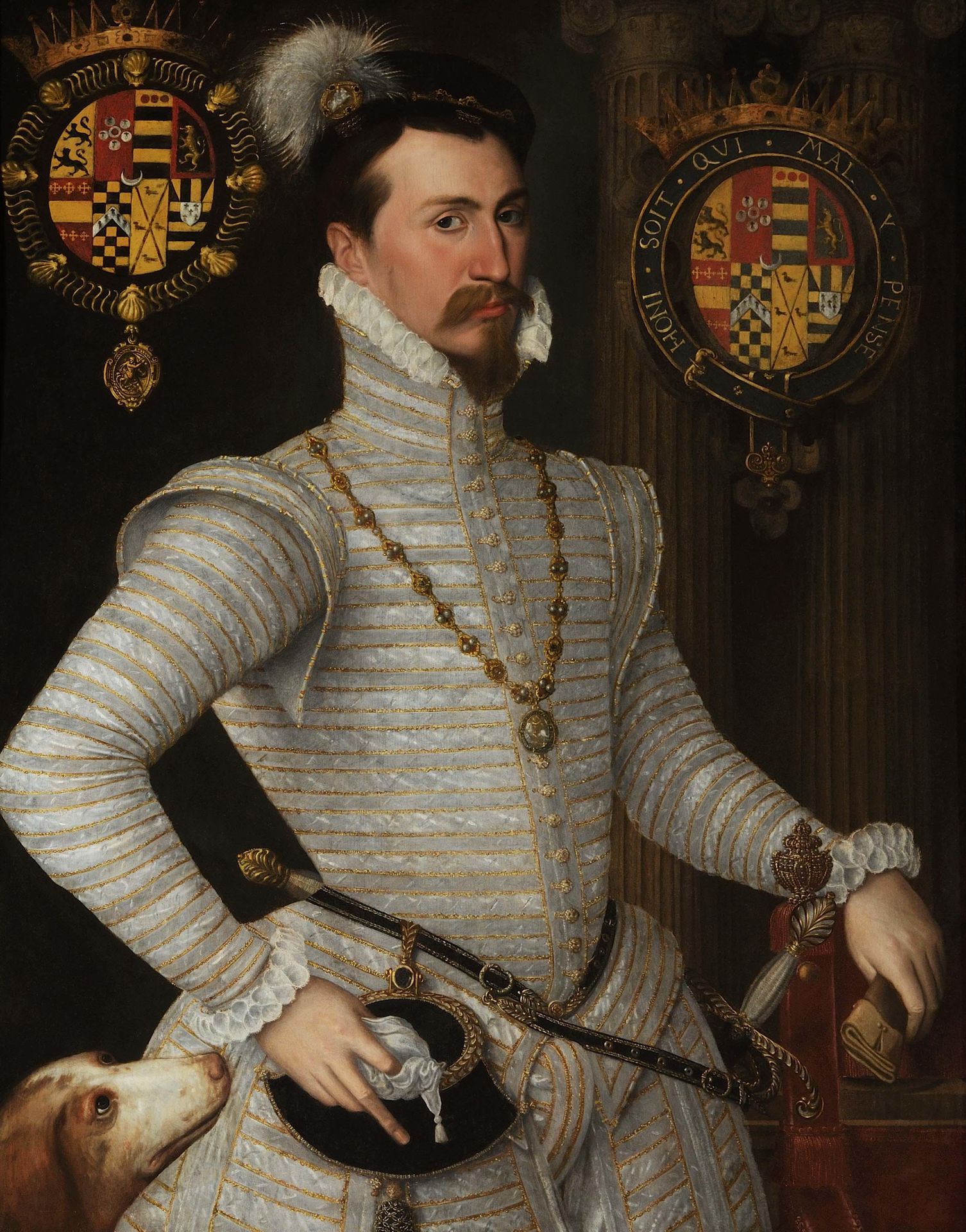
In April of 1555, Elizabeth's house arrest abruptly ended. when Queen Mary summons her to court. Laboring under the believe that she was expecting a child, Mary requested that Elizabeth joins her in her confinement, Elizabeth complied and attended to her sister in the birthing chamber throughout the summer, but Mary's due date came and went, but no baby was born, it had been a phantom pregnancy and Mary finally returned to court in August, quietly, without any sort of public announcement.
Elizabeth remains the heir to the throne and thus, remained a threat to her Catholic sister who did not wish to see a Protestant rule England, yet rather than being sent back to Woodstock and house arrest, Mary invite Elizabeth to stay at court, giving her chambers befitting her position, and allowing her more and more freedom as time went on, and eventually, she was permitted to return to her house and attendants at Hatfield.
It is possible that Mary's conduct in this matter indicated some renewal of sisterly feeling between the two women, Mary had, after all, just gone through a painful and humiliating experience, which had seriously undermined her authority and popularity, and Elizabeth's service to her during this time, may have provided welcome support, for which she was grateful, especially when she could not fail to hear the jeers and jokes being made, about her mistaken pregnancy, and her husband's abandonment of her. However, Mary may have invited Elizabeth to remain at court simply to keep a closer eye on her, but in that case, why would Mary have allowed her to return to her independent household within months?
Elizabeth remains at Hatfield, surveilled and under guard, but more or less free to do as she please, for the next two years, and during this time, she and Robert Dudley became closer than ever, he visits her often, and they enjoyed many of the same pursuits, including riding, hunting, dancing, playing cards, and witty conversations.
William Cecil, now a senior serving member of Elizabeth's household, disliked Dudley intensely because as a married man, Dudley could bring Cecil's young mistress, nothing but scandal and heartbreak, and both Dudley's father and grandfather had been executed for treason, this was not a good family record for a young man, who was the intimate friend of an already controversial princess, but Elizabeth and Robert seemed not to care about the implications of their relationship when in each other's company, and there was little Cecil could say to his young mistress, to dissuade Elizabeth from continuing to receive Dudley.
Elizabeth endured two years of tension and uncertainty after her return to Hatfield, but then on the 17th of November 1558, her sister May died, most likely of ovarian cancer, a likely explanation for some of the symptoms accoupling her two phantom pregnancies. Mary had refused to sign the death warrant her advisors had drawn up for her sister, and lacking any other heir, Elizabeth, the last Tudor princess, was promptly proclaimed Queen Elizabeth I of England.
The new Queen set a date for her coronation and made plans to move to Whitehall Palace the same day she was informed of Mary's death, but despite the fact that her religious sympathies were genuinely known, it was not immediately apparent, whether Elizabth meant to rule as a Protestant. Elizabeth was content that this ambiguity should last as long as possible, until she could consolidate her power and popularity, as she was well understood that England was still heavily Catholic, as were many of the nobles and clergy around her.
Old Whitehill Palace
Westminster
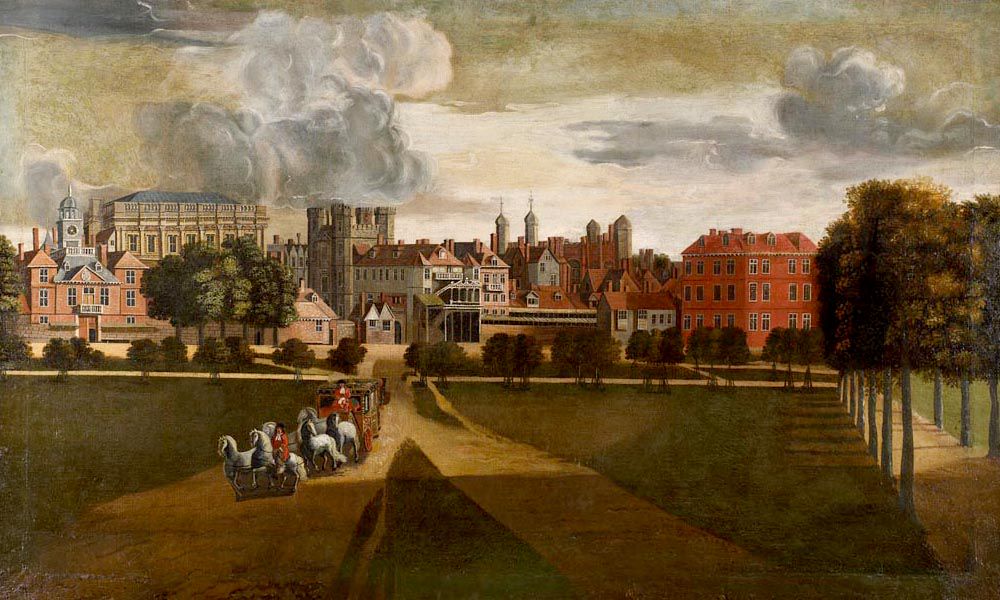
Nearly two decades of separation from Rome, had rendered many English ambivalent about papal supremacy, even those who considered themselves Catholics, in fact, Parliament proved willing to re-introduce royal supremacy, as early as December 1558, and to grant Elizabeth the title of "Supreme Governor of the Church of England," but while they may not have been eager to return to the Roman fold, most Catholics still strongly identified with the cultural elements of Catholicism, and were happy to have the Latin mass, processions pilgrimages, holy days, and monasteries restored during Mary's reign.
Elizabeth understood that she must tread carefully and slowly, while her reign was still new and uncertain. Queen Mary's body lay in state at St. James' Palace until Mid-December, with regular Catholic Vigils performed until her interment at Westminster on the 14th of December. Elizabeth continued to have the Latin mass celebrated in her private chapel but demonstrated her discomfort with Catholicism in other small ways, such as requesting removal of specifically Catholic rituals, such as the use of tapers and censers for incense, or the raising of the host during mass. Elizabeth ensured that her sister's funeral was both magnificent and in-keeping with Catholic traditions, although she did imprison a eulogizing priest following the funeral, for vaguely referring to her supposed illegitimacy, and not surprisingly, at Elizabeth's coronation a month later, no such doubts were expressed, and Elizabeth spent that month on an extensive public relations campaign in and around the capital, where she was received rapturously wherever she went, men knelt before her, women offered her bouquets of flowers, children recited poetry for her, and she received the adulation with warmth, modesty, and gratitude.
It was during this period that Elizabeth first began to cultivate the public persona for which she would become legendary, she was now twenty-five, tall, with a good figure, and often described as "Handsome", but far more than her looks, people were drawn to her personality, Elizabeth seemed to know just how to approach everyone, showing motherly kindness to one, jesting daringly with another, or flirting outrageously with yet another, the people loved her, and her beauty and charm, made people compare her with a young Henry VIII, who had also inspired much hope and admiration, when he first ascended the throne. When the day her coronation arrived, she knew she had won the crowed, as she processed through the city of London on the 14th of January 1559, the people cheered and greeted her joyfully, she was anointed and crowned Queen of England and Ireland the next day in Westminster Abbey, entering the church with magnificent royal robes of gold, trimmed with ermine and jewels, her long red hair loose and flowing.
As Elizabeth passed by attendees promptly out of pieces of the blue carpet upon which she walked, as souvenirs, ever conscious of how controversial her Protestant faith still was to many of her subjects. Elizabeth's coronation was a Catholic service, but it would be the last one in English royal history, however, Elizabeth did not prostrate herself for the anointing. Instead, she simply knelt in a dignified fashion, moreover, as soon as the Latin mass began, the Queen was said to have promptly withdrawn to a private chamber, to change her costume for the upcoming feast and celebration, a clear disregard for one of the most significant Catholic customs.
Emerging in an exquisite costume of purple and ermine, she headed the procession out of the church, smiling, graciously greeting members of the cheering crowds, in a manner that one observer believes to quote: "exceed the boundaries of gravity and decorum", Elizabeth had cleverly managed to have hirself crowned, more or less within the sanction of the Catholic Church proper, without ever having to declare herself a Catholic, she had learned important lessons from the reigns of her father, brother, and sister, and knew she had to approach the religious question carefully, to prevent strife and persecution erupting once again, but at the same time, she would not be cowed by the nobles, ambassadors, and clergy around her, she assorted her, she assorted her will as anointed sovereign, and held her popularity with the people before her like a shield.
One of Elizabeth's first acts as a crowned Queen was a religious settlement, at her first official Parliament, she managed to convince her government to pass an Act of Uniformity, which reinstated the 1549 Book of Common Prayer with a few alterations, notable to the administrations of the Eucharist, and one sticking point concerned the real presence of Christ's body and blood in the Eucharist, known as transubstantiation, which Catholics believed in and Protestants did not.
Some historians argue that the liturgical alterations made it possible for both Protestants and Catholics to interrupt communion as they pleased, in addition, the traditional Catholic vestments were preserved, as were the images and crucifies in churches and monasteries across England, unlike during Edward's reign, but while some historians characterize these actions as concessions to Catholics, others point out that vague permissiveness and a few visual reminders of Catholicism, would not have been enough to satisfy Catholic clergy and laty, who had so briefly had their religion restored before it was taken away once again.
Rather, they argue that the more visual traditions retained by the new Church of England, were meant to distinguish the faith from more radical reformed Protestants, it seems that Elizabeth, originally intended to walk a similarly cautious "middle way" in religion, as her father Henry VIII had done, and at the beginning of her reign, Elizabeth had filled as many bishops and archbishops posts as possible with Protestants, many of whom were returning from exile, into which they had fled when her sister had been crowned Queen, and the Marian persecutions had begun.
These Protestant bishops had complained bitterly to Elizabeth, upon their first inspections of churches and monasteries, claiming that the clergy and their congregations clung to their "images" and "superstitions" stubbornly, they asked for the authority to impose a more Calvinistic austerity, Elizabeth, however, refused to allow the crucifixes and other seemingly "popish" symbols to be removed, even from her own chapel.
The widespread disagreement illustrates the level of religious discord, which was prevalent, not just in England but across Europe during the sixteenth century, Elizabeth's religious settlement abolished the heresy laws, removing the violent paneities for lack of religious conformity, and the settlement also decreed punishment for refusal to attend Sunday services or for other examples of Catholic failure to conform, but the penalties were small fines, which frequently went unenforced, depending on religious sympathizes in a given region.
Many Catholic clergy and laity, found it convenient to conform outwardly, while inwardly retaining their own beliefs, and as Elizabeth once declared quote: "There is only one Christ, one faith, all else is a dispute over Trifilos", Indeed the English certainly had their struggles with sectarianian, like most Europeans at this time, but under Elizabeth these struggles were considerably less violent than they proved to be elsewhere, such as in France for example where St. Bartholomew's Day of 1572, saw Parisian Catholics massacre over 3,000 Protestant Huguenots in a single day, roughly a third of all the Protestants in Paris.
St. Bartholomew's Day massacre
24th of August 1572
Wow! Fun Fact: The Huguenots made a settlement in Oxford MA. There are historical markers if where they were and the marker of the Johnson's family massacre. A family that was massacred by Indians. Only the wife was saved by her brother.
Compared to this level of religious strife, England remained fairly calm under Elizabeth, and more than a decade would pass between her accession to the throne, and the events which would finally force her to escalate Protestant reforms in England or crack down on Catholicism, and so, once Elizabeth had settled the religious question, which she and her Privy Council considered paramount, they could turn their attention to the business of governing, which under the circumstance promised to be challenging.
England's administrative, economic, and military infrastructure, all needed urgent attention, Henry VIII had spent ruinously during his reign, and his two subsequent heirs had not lived long enough to see England fully recover, with Henry's funding for all his wars and lounxious lifestyle and years of bad harvest left some people still struggling.
English trade has fallen off as well, following the decreasing value of the English currency, which for centuries, had been renowned for its stability, the English begun to hoard gold coins and leaving only the "copper" in circulation, foreign trades were soon refusing English currency and insisting of payments in gold, and as a result, gold continued to fly out of English treasury, it was one of the worst cases of currency debasement in history.
Elizabeth worked closely with her newly appointed Secretary of State, her mentor William Cecil, and Thomas Gershan, financier, merchant, and longtime economic advisor to the Tudors, to formulate a strategy to rescue the economy, and so by 1561, all the currency had been withdrawn by Circulation, dissolved, and replaced with freshly minted coins of gold and silver, impressively, Gresham was able to help the crown reap a profit of 50,000 pounds in the process. The recovery of England's currency helped the economy rebound nicely. Prices stabilized, and trade boomed once more, in addition, Gresham founded London's Royal Exchanged just four years later, further facilitating the growth of trade and investment, the result was not just an explosion of mercantile activity, but also exploration.
An island nation requires ships, for economic as well as military purposes, and Elizabeth understood that a good deal of investment was needed in this area, yet she was still constraining by budgets, and therefore the process of naval development was a careful exercise in necessity and practicality, England already had fairly decent fleet of ships, thanks to the naval programs undertaken by Henry, and continued by Edward and Mary, yet the English fleet was no match for Spain, the pre-eminent power in Europe, nor did England yet have the financial resources to construct a war fleet with hundreds of ships. As such, the ships built during Elizabeth's reign tended be multi-purpose in design, meant for trade, exploration, fishing, and warfare, they were smaller, faster, much more maneuverable than the standard warship, and yet not so diminutive that they could not be equipped with multiple gun carriages, only about three dozen would be built for the royal fleet, but they were amazingly versatile and contributed greatly to England's exploration, trade, and military capability.
England's economic recovery was impressive, and much credit is due to Elizabeth and her advisors, especially as, unlike other states, regular taxation was not a strategy England could resort to, because taxes had to be approved by Parliament, and anyway, imposing taxes would be unpopular, and might perhaps spark rebellion, in a people, already poor and struggling. All resources of funding for England's recovery came from crown land revenues, customs duties, and the Queen's personal fortune, due to the necessity, Elizabeth's court was marked less extravagant than her father's. Indeed, as her court was heavily Protestant, both religiously and culturally, careful economy and an avoidance of excessive ostentation was generally approved of, she kept her staff and Privy Council small, installing most of the members of her traditional household in position of court, and entertainments, and banquets in the early years were elegant, but not overly extravagant.
Because Elizabeth was young, single, and the Queen, the question of her marriage consumed everyone around her, if Elizabeth should die childless, the closest remaining heir to the English throne was Mary Stuart, Queen of Scots, nine years younger than Elizabeth, and the granddaughter of Margaret Tudor, Henry VIII elder sister, Mary was Catholic, however, and so Elizabeth and her advisors understood, that the preservation of the new religious settlement, hinged on the religion of the heir to the throne.
Mary Stuart, Queen of Scotland
1542-1587 (reign 1542-1567)
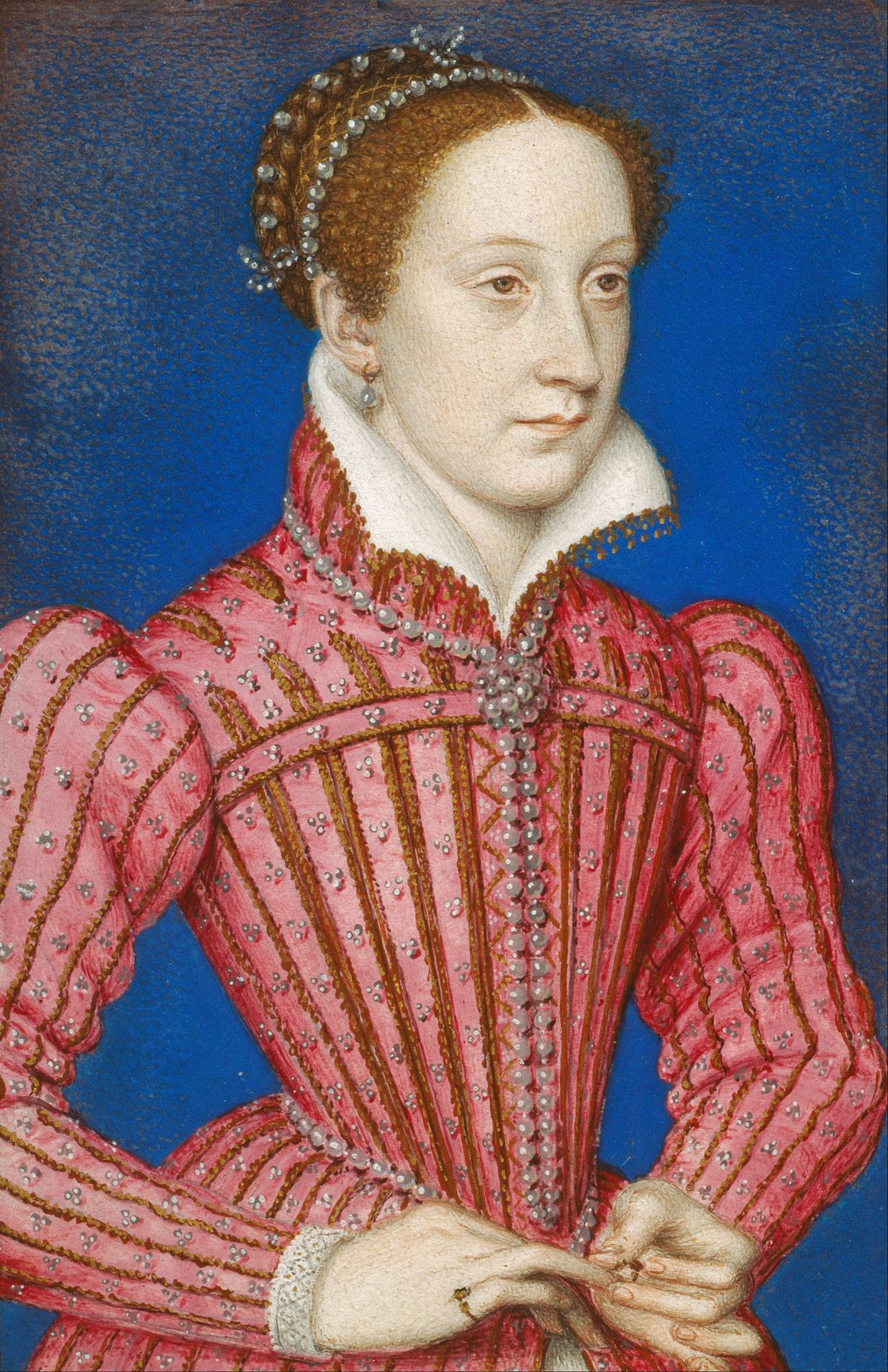
Margaret Tudor, Queen of Scotland
1489-1541 (Reign 1503-1515)
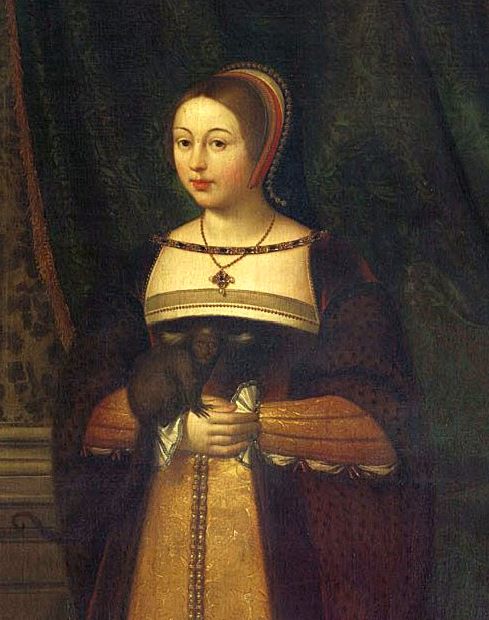
When Elizabeth was crowned, offers for her hand began to pour in, from every royal court in Europe, she rarely refused any of them outright, making a great show of taking her time to consider, even receiving some at court and exchanging gifts, but ultimately, she refused them all, and once remarked, quote: "Better a beggar woman and single, than a Queen and married." To the great consternation of her advisors, by Privy Council, her Parliament, and William Cecil in particular, the only man she seemed to show any sustained interest in was Robert Dudley, and so when Elizabeth became Queen, she appointed Dudley, her Master of Horse, this was not only a position of prestige, but it was also the least demanding job at court, and the most fun, rather being buried under paperwork and commissions for the Queen, Robert's position allowed him to delegate most mental tasks to servants, while he accompanied the Queen on her rides and hunts.
Despite her new position as Queen, and the many more eyes upon them as a result, Elizabeth and Robert failed to mask them enjoyment of each other's company as they danced and verbally sparred with one another, before spectators at court, every gesture between them seemed to signal courtship. Everyone disapproved and the scandal escalated, when in early 1559, she moved Robert's chambers to the rooms adjoining to her own, likely with a view to regaining their earlier luxury of privacy and intimacy.
Now, all of Europe began to wonder, just how far their intimacy had escalated, and to wonder where the relationship was leading, Ambassadors, nobles, and royal personages across Europe seemed certain, that they had slept together many times, these rumors resurfaced nearly three decades later, when a man appeared at the court of King Philip II of Spain, claiming to be Arthur Dudley, the illegitimate son of Queen Elizabeth and Robert Dudley, he claimed to have been born at Hampton Court, and quietly taken away by a servant, who had raised him and revealed the truth of Arthur's parentage on his deathbed, coincidently, his age would place his conception sometime in 1561, around the same time that Elizabeth, was reportedly confined to her bed with a mysterious illness accompanied by bodily swelling.
The story seems plausible, and probably seemed especially so to Philip, who would gladly believe anything to Elizabeth's discredit, and at this time, Dudley had already been largely absented from court, but Elizabeth was still seeing him discreetly, however, many historians give the Queen the benefit of the doubt, as whilst there is no denying that she had an intermate and intense relationship with Dudley, some historians doubt the likelihood that it was fully sexual.
Philip II of Spain
1527-1598 (Reign 1556-1598)

Elizabeth's life had been one long object lesson in the dangers of sex and love, which for her meant loss of power, vulnerability, betrayal, and the deadly dangers of childbearing, a regular and fully sexual relationship, seems an enormous risk for Elizabeth to have willingly taken, but whatever the truth of their relationship, in September of 1560, Robert's wife, Amy Robert, died suddenly under suspicious circumstances, and the scandal exploded. Since speculation had surrounded Elizabeth and Dudley for months already, suspicion fell naturally upon the two of them, particularly, Dudley, whom many believed had murdered his wife, so that he would be free to marry the Queen, not to mention, to become King of England, Amy had reportedly sent the servants away from the house for the day, and was found later, at the bottom of the staircase with her neck broken, theories abounded among contemporizes, and continued to do so, among historians today, including murder, suicide, as well as accidental death.
The discovery in 2008, of the coroner's report which accompanied the examination of Amy's body, has shed a great deal of additional light on the circumstances of her death, but the ultimate cause of Amy Robert's sudden demise, remains a mystery. Most historians are now fairly doubtful, that either Elizabeth or Dudley had any part in Amy's death, as they would have known that suspicion would fall upon them immediately, and they would have realized that such suspicion, would make it impossible for them to ever marry.
The belief, however, false, that the Queen and her lover had murdered his innocent wife, could very well spark a civil war, and knowing this, Elizabeth distanced herself from Dudley publicly, but they continued to meet in secret, and he remained her closest friend, the questions surrounding Elizabeth's supposed virginity, however, did not abate, and it was around the time of Amy's death, some historians note, that the Queen began to cultivate the public image of herself as The Virgin Queen, pledge in marriage to the realm, rather than a husband, and mother to all of her people.
This campaign manifested itself in Elizabeth's speeches and in the poems and drams, in which the great writers of the day immortalized the Queen. Her older sister Mary may have been the first to truly legitimize female monarchy, but Elizabeth truly elevated it, molding a cult of personality, that would long outlast her, in which people found echoes of the Virgin Mary, a divine Queen, whose power and devotion to her people, could not be crompted.
Elizabeth would continue to entertain suitors' proposals, such as those from Eric XIV of Sweden, her widowed brother-in-law, Philip II of Spain, Francois, Duke of Alencon and Anjou, and Ivan IV "The Terrible," of Russia, but she ultimately refused them all, Dudley also did not give up trying to persuade Elizabeth to marry him, for a further fifteen years, and in 1575, when they were both in their early forties, Dudley staged a magnificent series of entertainments, over several days at his estate at Kenilworth, costing him thousands of pounds, in a grand romantic gesture, to finally persuade the Queen to marry him.
Ultimately, as much as she loved Dudley, she had to refuse, understanding that as woman and a Queen, she could not marry without risking the loss of her royal authority, she had learned a great deal from the experience of her mother, sister, stepmothers, and from her own experiences with Thomas Seymour, that the only way for a woman to reign supreme, and stay alive and secure, was to stand alone, and above everything.
This view was likely at the root of Elizabeth's determination, for England to have "One mistress and no master", she would feel the sting of betrayal, however, when soon after her refusal of Dudley's last proposal, he took one of her ladies-in-waiting, Lettice Knoileys, as his mistress, eventually marrying her, when she discovered she was pregnant, forcedly jealous and eranged, Elizabeth banished both of them from court, for over a year.
(I think she shouldn't have gotten so jealous since she kept refusing his proposal. It's her choice and he was just moving on with his life. Elizabeth is selfish)
Lettice Knollys
1543-1634
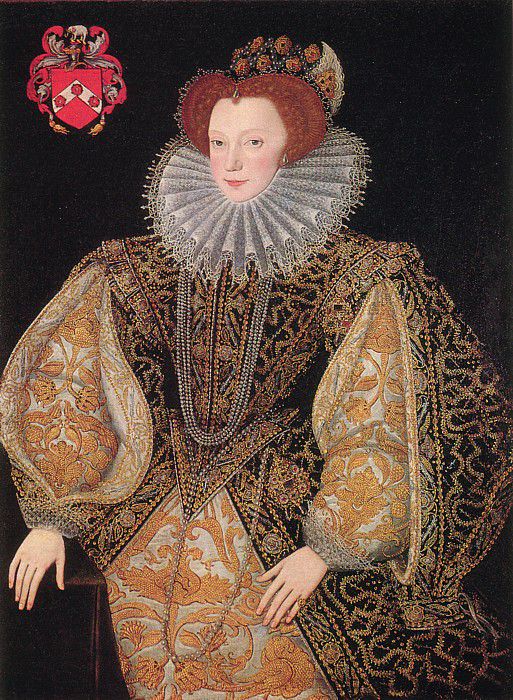
Elizabeth gender and position as monarch, did require some adjustment for courtiers, Parliament, and Privy Council, in England and throughout Europe, women were still generally, believed incapable of exercising authority, responsibly or competently, and Elizabeth therefore initially found herself questioned at every turn, and in order to maintain control, she summoned all of her father's brash imperiousness, and her own exceptional gift of rhetoric, to assert herself.
If she had been a King, her courtiers would have related to her man-to-man, because she was a woman, Elizabeth was forced to cultivate relationships with her ministers and nobles, which empathize an element of courtly love, characterized by their flattery, subservience, and adoration of her, Elizabeth understood that her beauty and personal charms, could be employed to maintain her authority, Indeed Elizabeth seemed most at home, in the company of men, riding, hunting, joking with them, and teasing them.
When not prevaricating over marriage, or accepting the adoration of the men around her, she was frequently plainspoken, and appreciated the same quality in others, Elizabeth's comparatively greater comfort with men, might help explain why she discouraged her courtiers from bringing their wives to court, but Elizabeth was also known to be rather vain, and likely would have preferred to have no competition for attention, besides herself and her ladies, however, Elizabeth would only be a young woman for so long, able to wield her youth and beauty as a tool of authority.
In 1562, the 29-year-old Elizabeth contracted smallpox.
Smallpox
Variola Virus
She recovered without any significant long term damaged to her overall health, but the disease left her face badly scarred, wounded her pride, she began to wear elaborate makeup to ameliorate her pot-marked appearance, and heightened her image of glamour, unfortunately, the white make-up she wore to mask her scarred complexion every day, was lead-based, and the vermillion she used to redden her cheeks and lips in life contained significantly amount of mercury, it might have been the regular use of these compounds, which contributed to the continuing damage to her skin, as well as her hair loss, later in life.
When Elizabeth began too noticeably lose her hair, she began to wear elaborate wigs in addition to her makeup, and after the austerity measures of her early reign, Elizabeth could afford to spend more lavishly on her wardrobe, and wore increasingly more elaborate dresses, with magnificent ruffs, or broad lace collars, splendidly embroded, and sewn with jewels to compensate for her advancing age, and to maintain her image, Unfortunately, by her fifties, Elizabeth's teeth began to blacken and decay. Sugar was a great novelty in Europe, since it had been introduced from the Americas, and the Queen loved to sprinkle it, in just about everything, even her wine, her oral health eventually degenerated to such a state, that Elizabeth was forced to used rolled up stripes of linen, soaked in frequent oil, and placed in between her cheeks and gums, to sweeten the foul stench of her breath, as a result of her decaying teeth, and within a few decades, she was significantly less pretty and youthful, but still as sharp, cautious, charming, witty, and charismatic as ever, and England's prosperity, relative peace, and cultural flowering during the years of Elizabeth's reign, was the envy of Europe, and ensured her continuing popularity with her own people.
William Shakespear
1564-1616
Of all the achievements of the Elizabethan period, the one which probably most deserves the label "golden age" is that of English literature, as some of the greatest writers, poets, and dramatist in English history, dedicated their works to Elizabeth, which were performed for her at various places, the authors receiving patronage from members of the court, to continue their literary pursuits. Elizabeth rarely patronized writers personally, but loved theatre and poetry, and certainly encouraged them, Christopher Marlower, William Shakespear (My favorite), Edmund Spenser, Ben Jonson, and Philip Sidney, are just a handful of the many great literary minds, who enriched English culture during Elizabeth's reign, and even the gallent courtier, soldier, explorer and spy for his Queen, Walter Raleigh, was a poet, the sheer breath of Raleigh's experiences, bringing out the excitements and pursuits of the Elizabethan age, he explored North America, founded the first, albeit short-lived, English colonial settlement in North America, at Roanoke Island, captured Spanish gold as a privateer, in the unofficial service of the Queen, and is credited with introducing tobacco to England.
Walter Raleigh
1552-1618
I also want to include Richard B. Edwards, even though he isn't as well known. Because he's my directed ancestor and a half-brother to Elizabeth. His parents were King Henry VIII and his mistress Agnes Beaupenny Edwards (Born Blewitt), she was a married woman. Richard lived from October 1523-October 31, 1566. He was a poet and playwriter too during that day but not as well-known as the others and only one work of his survived.
The exciting new frontiers of exploration and trade, broadened English horizons immensely, just as literary flowering did for English culture, and between 1576-1578, Martin Frobisher sailed in search of a Northwest Passage, Francis Drake became the second person ever, to go around the globe in 1581, for which he received a knighthood, and Raleigh's older half-brother, St. Humphrey Gilbert, landed in Newfoundland in 1583 officially claiming the island for Elizabeth, in order to secure England's pre-eminence in the lucrative fishery, which had been for more than a century, an international, open-access resource in the region.
Colonization was not considered a priory at this time but became more so, the following century, with the reign of James I, and most of the profit gleaned from Elizabethan exploration came from either legitimate trade or from English privateers, plundering bullion from Spanish ships and these English navel activities combined with religious differences, increased tensions between England and Spain, the only truly serious military threat Elizabeth regime ever faced.
The first years of Elizabeth's reign saw fairly good relations with Spain, King Philip had a more or less permanent offer of marriage on the table with Elizabeth, and what he wanted least of all was to have her marry a prince of France, Spain's mortal enemy, Elizabeth saw no need to endanger England's healthy relationship with Spain, by refusing him too quickly, but finally did reject his pursuits of her, on the basis of affinity, since Philip had been married to her sister.
St. Peter's Basilica
Rome
This soured Philip, and within decade, relations between England and Spain had begun to degenerate once again, the fact that Philip was a committed Catholic, made him especially beholden to the Pope, whom even the King of Spain could not refuse when, disgusted with the actions of the English Queen, the head of all Christendom ordered him to invade England, and depose Elizabeth.
All of this was tied up with an ongoing succession crisis, in which the religion of Elizabeth's heir, Mary, Queen of Scots was the main issue, Mary was the closest relation to the throne that Elizabeth had, which she readily admitted, saying that she knew of no other with the claim, as good as Mary's, yet Elizabeth refused to name her explicitly, as the heir to the throne, having once been in Mary's position herself, a position which she referred to as "second person," she well understood that naming Mary as her heir, could inspire plots, to engineer her rise to the throne, just as the Wyatt Plot, had attempted to place Elizabeth on the throne, ahead of her sister Mary, when she had been Queen.
The Queen of Scots was a Catholic, and for Elizabeth to encourage her claim, would be to open herself up to the plots and determination of Catholics, to place one of their own on the throne of England, and so restore Catholicism, Elizabeth hoped that by stalling Mary is diplomatic fashion, she could keep her at arm's length. Unwilling to leave her throne to a Catholic but thinking that she might be able to control Mary if she could choose an English, Protestant husband for her, Elizabeth proposed in 1563 that the Queen of Scots wed her favorite.
Robert Dudley, neither party found this attractive proposition, and when Elizabeth failed to give Mary what she wanted, the Scottish Queen decided to pursue the English throne, through a marriage of her own choosing, she quietly entered into negotiations with the family of Henry Stuart, Lord Darnley, as Darnley and Mary were cousins, both grandchildren of Margaret Tudor, Henry VIII's sister and both Catholic. This marriage was an enormous threat to Elizabeth, since any children born of it, would indisputably be viewed as legitimate heirs to England's crown, in a way Elizabeth was not, being a Protestant, who had not only been conceived out of wedlock, but also one whose parents' marriage had been declared invalid, her restoration to the succession, in Henry VIII's will had been enough proof for Parliament, of Elizabeth's legitimacy and right to the throne, but it was not enough for the Catholic church, or for English Catholics, who wanted to see the Protestant Elizabeth removed.
James VI & I of Scotland & England
1566-1625 (Reign 1567-1625 & 1603-1625)
Mary did indeed give birth to a son, James VI of Scotland, but her marriage was her undoing, and within two years, alienated Protestant rebels had triumphed over the Queen, Darnley, who not only turned against Mary, but had also proved to be vicious and unstable alcoholic, murdered by conspirators, who blew up the house where he was staying, at Kirk O'Field, Darney's body was discovered in the garden, without any burn marks or ash on him, apparently strangled to death, the leader of the conspiracy leading to Darney's death, is generally believed to have been James Hepburn, Earl of Bothwell.
Two months later, Mary wed Bothwell, feeding the rumors that had been involved in her husband's murder, causing most Scots, both Protestant and Catholic, to tun against her, horrified, Elizabeth wrote to her cousin, urging her to distance herself from her husband's murder, and to do everything possible, to bring the guilty to justice, even if the guilty were very close to her, she said, hinting at the suspicion around Brothwell.
James Hepburn
1534-1578
Some historians believe that Mary may have been raped by Bothwell, to coerce her into marriage and it seems that the Queen of Scots was indeed pregnant when she was married, miscarrying twins some months later, she was forced by the Scottish nobles to abdicate, in favor of her son, James, and was imprisoned in Loch Leven Castle, and after an ill-fated attempt to regain her throne, Mary fled to England, to seek Elizabeth's help in restoring her to power. Elizabeth had found herself in an impossible position, the instability of any female monarchy, spelled trouble for her own reign, and if Mary could be so easily pulled down, so could Elizabeth, and although Mary would, no doubt, have been grateful for any assistance Elizabeth might provide, in regaining her throne, on the other hand, Mary had already jeopardized Elizabeth's position once, by marrying Darnley against her wishes, producing as heir to Scotland, and potentially, England as well, and so, keeping Mary in England, where she could be watched and guarded, might be the safest course, until Elizabeth could figure out what to do with her.
However, Mary's very presence, inspired a series of Catholic-backed plots to depose Elizabeth, and raise Mary to the throne instead, the first erupting in 1569, Only a year after Mary's arrival in England, and when the rebellion was crushed, Elizabeth ordered the execution of 750 Catholic rebels, and Catholic resistance to Elizabeth's rule increased, not just in England, but acrossed Europe as well.
In 1570, Pope Pius V, issued a papal bull in response to the execution of Catholic rebels in England, the Regnant in Excels, which excommunicate Elizabeth, and absolved all of her subjects from their allegiance to her, this was essentially a kill-order, authorizing any loyal Catholic in Europe, to assassinate the Queen, forcing Elizabeth's government to legislate the death penalty, to anyone promoting conversion to Catholicism in England.
Pope Pius V
1504-1572 (Papacy 1566-1572)
Many missionary priests were executed in the ensuring years, and these developments convinced Elizabeth of the need, for a greater intelligence and security Infrastructure, and in 1572 William Cecil recalled Sir. Francis Walsingham, from his post in Paris to serve as the Queen's spymaster, Walsingham was a brilliant man, building one of Europe's first truly comprehensive intelligence networks, training and sending out numerus agents, employing codebreakers, and intercepting communications wherever possible, he proved himself to be nearly as indispensable to the Queen as her right-hand man, William Cecil himself.
A committed Protestant, Walsingham was only too happy to remain loyal to Elizabeth, and defend her position on the throne, he had personally witnessed the mass slaughter of Protestants at the St. Bartholomew's Day Massacre in Paris, prior to his return to England, and he was determined not to see the same thing happen to his own country, and so, with the help of her advisors and spy network, Elizabeth managed to weather two additional Catholic conspiracies, to engineer the rise of the Queen of Scots to the throne of England.
Francis Walsingham
1532-1590
The Ridolifi Plot of 1571 saw the conspirators planning to wed Mary to Thomas Howard, Elizabeth's cousin and the Duke of Norfolk, who would then become, King Consort of England, alongside Mary, when the plot was crushed, Howard was promptly executed for treason, and May was moved to a far more secure and confining residence.
Thomas Howard, 4th Duke of Norfolk
1536-1572
Then in 1586, the Babington Plotwas foiled, and Elizabeth's advisors began to urge her to execute Mary for treason,
Execution of Anthony Babington
1561-1586
Walsingham had carefully assembled a collection of letters comprising comprehension and damming evidence of Mary's involvement in the plot, and Elizabeth was persuaded, that Catholic opposition in Europe in her rule, was serious enough that, allowing Mary to live, could invite further conspiracies, until one eventually succeeded.
Despite her initial refusals to entertain any suggestion of executing a fellow Queen and also believing that the Spanish might invade to aid Mary's cause, Elizabeth was eventually persuaded to sign Mary's death warrant, and the Queen of Scots, who had imprisoned in England for nineteen years, by the woman she had appealed to for help, was beheaded on the 8th of February 1587.
Elizabeth reacted to Mary's death with an agony of rage and remorse, the sincerity of which, her contemoraries debated, and which historians continue to question today, Elizabeth claimed that she had instructed the secretary to whom the warrant had been entrusted, William Davison, not to execute the warrant, unless a Spanish invasion was imment, but the fact remains, that Elizabeth did sign the death warrant, and that she undoubtly knew she was safer with Mary dead, the backlash from Mary's death, was to present Elizabethan England, with its greatest yet, the battle against the Spanish Amada.
When it came to foreign policy, Elizabeth had always been extraordinary cautious and had avoided engaging in military conflict wherever possible, a far cry from the medieval warrior monarch, she participated in several intermittent conflicts, but her commitment was never very great, wars were expensive, but more than that, Elizabeth was concerned about her inability to direct the actions of her absent generals on campaign.
Elizabeth is now expecting an invasion from the Spanish because of the execution of Mary, Queen of Scots. The Pope had asked Philip of Spain to invade England, depose Elizabeth, and take the throne for himself, Philip was the pre-eminent Catholic monarch of Europe, and refusing a solemn order to crusade from the Pope, was not something he could do, he gravely acquiesced to the Pope's request, and prepared to sail for England, anticipating the advance of the Spanish Amada, Elizabeth authorized Sir. Francis Drake to sail to Cadiz and lay siege to the Spanish fleet, the raid was a great success, with dozens of ships destroyed, and the Amada unable to sail out and face her enemies, this gave England time to prepare while Spain recovered from the setback at Cadiz.
On the 12th of July 1588, the 130 ships in the Spanish Amada departed for their invasion of England, intending to collect troops in the Netherlands first, part of the army of 55,000 men they intended to unleash on England, who had nearly twice as many ships as Spain, but only 34 out of 200 comprised the English royal fleet, the rest belonged to merchant mariners and privateers, however, despite their greater number of ships, the English vassals were much smaller and were equipped with about half of the firepower of the Spanish fleet.
The odds seemed to be against an English victory, and as much of the English Channel coastline as possible, was being fortified for defense, the ensuing sea battle took place over approximately two weeks, on the 19th of July, the Spanish fleet was first sighted off Plymouth, and the next day, The English ships proved much faster and more maneuverable, but few were willing to get close enough, to inflict significant damage, and so only one Spanish ship was taken.
The Spanish seemed unwilling to attack, until they had rendezvoused with the rest, and they anchored off Calalasis, to await their allies, but then on the 29th of July, the English launched a night attack with fireships, assisted by the Dutch, who had blockaded the rest of their ships, they scattered the Amada, forcing them to abandon their rendezvous, the English pursued the fleeing Spanish ships north, along England's east coast, and in the ensuing severe weather, many Spanish ships were wrecked off the coasts of Scotland and Ireland, with less than a third of the original Amada, eventually limping home in Spain.
On the 8th of August, Elizabeth rode out to review her troops at Tilbury, who were mustering to defend England, under the command of the Earl of Leicester, Dudley was old and ill now, but stood staunchly at Elizabeth's side, dressed in white, and wearing a magnificent silver breastplate, she gave the most famous, and perhaps the greatest speech of her reign:
"I am come...to live and die amongst you all--to lay down for my God, and for my Kingdoms and for my people my honor and my blood, even in the dust. I know I have the body of a weak and feeble woman; but I have a heart and stomach of a king--and of a King of England too, and think foul scorn that...any prince of Europe should dare to invade the borders of my realm...I myself will take up arms--I myself will be your general, judge, and rewarder of every one of your virtues in the field." The troops cheered in response to this heartening speech from the Queen and made ready, little did they know, that they were already safe, and that the defeat of the Spanish at sea, had already occurred, the defeat of the Amada was one of the greatest military victories in English history, and the first and largest engagement, of the undeclared Anglo-Spanish war, which lasted until 1604, but despite England's glorious victories in 1588, Spain will see far more successes throughout the conflict, than the English ultimately did. Some historians have referred to Elizabeth's remaining years following 1588, as the "second reign", England's economy began to suffer, due to the costs of war with Spain, and of quelling rebellion against English authority in Ireland, taxes mounted, to pay for this expensive conflict, and prices rose, as the country experienced a series of poor harvests, additionally, by the 1590s, most of Elizabeth's old guard of advisors, courtiers, and friends were dead and gone, their positions taking over by a younger generation, for many of whom, ambitions and advancement, seemed impeded by an aging Queen, more set in her ways than ever.
These problems contributed to a dip in Elizabeth's popularity, during the last fifteen years of her reign, she faced one painful personal loss after another, less than a month after England's victory over the Spanish Amada, her longtime love, Robert Dudley, died, he remained with her until he was certain the danger of invasion had passed, and then he left her, safe at Richmond Palace, Elizabeth received letters from him a mere four days before his death, and after hearing of his passing, she labeled it "his last letter", and kept it in a locked box next to her bed, with his miniature portrait until her own death. Elizabeth was utterly brokenhearted at Dudley's loss, and stayed in her room for days, unable to see to the business of court or council, she could not bear to hear Dudley's name spoken thereafter, without lapsing into a longing sadness, and in 1598, Elizabeth's heart broke once more, when William Cecil, Lord Burghley, her childhood mentor, and most trusted friend, died at the impressive age of 74, she had forbidden his retirement, as long as she could, certain that she will be unable to manage without him, and the loss of one old friend after another, wore Elizabeth down over the next few years.
The final blow was a betrayal by her newest court favorite, Robert Deveroux, Earl of Essex, the son of Elizabeth lady, Lettice Knollys and stepson of Robert Dudley, in his early twenties, handsome, brash, and outrageously flirtatious, the young Earl felt no shame in taking liberties with the Queen, who was both flattered and indulgent with him, she gifted him monopolies on wine imports, and continually appointed him to military positions, despite his demonstrated record of irresponsibility, and even incompetance.
Robert Devereoux, 2nd Earl of Essex
1565-1601
Elizabeth sent Essex to Ireland to put down a rebellion in 1599, but was enraged when he first lost more than 11,000 men in only two months, thanks to highly effective guerilla attacks by the Irish, and rather than attacking Ulster as he was commanded, he negotiated for peace with the Earl of Tyrone Ireland, and on hearing of his Queen's deep disapproval of his actions, he deserted his post in Ireland, traveling ceaselessly until he reached London, he believed that if he could manage to speak to Elizabeth alone, that he could assuage her anger, and she would quickly forgive him, however, he made a fatal error.
Impulsively, Essex burst into the Queen's private chambers unannounced, and found her in nothing but her smock, without her wig, makeup, and elaborate dress to mask her pockmarked, aged skin and her baldness, Elizabeth was deeply embarrassed by the intrusion, but she was much more humiliated to learn, that Essex had disparaged her appearance publicly following the incident, wounding her fragile vanity, and sending her into a rage, Essex was placed under house arrest, and deprived of his monopolies, and in February 1601, he sought to lead an insurrection against Elizabeth, not to depose her, but to extract concessions from her, including the return of his privileges, but he was unable to attract enough support to be successful, and was executed for treason on the 25th of February 1601.
Essex's death depleted Elizabeth, and observers remarked that her mourning for him lasted until the following year, the Queen was growing old and weaker all the time, and it felt to Robert Cecil, son of William Cecil, and now Elizabeth's chief minister, to encourage a settlement of the succession quietly and gently, he knew that if Elizabeth had thus refused to name a successor, she was not going to do so now, and so Cecil entered into secret negotiations with King James VI of Scotland, who remained the nearest claimant to the English throne, advising him on the manner by which he should write to Elizabeth, to put her in the best frame of mind to name him her heir.
Robert Cecil, 1st Earl of Sailsbury
1563-1612
James listened well, and his overtures were received warmly by the Queen, some historians maintain, that while she did not explicitly state in her replies, that James would be her heir, her acceptance of him as such, was clearly implied in her letters. In March of 1603, Elizabeth fell seriously ill and for nearly two weeks, she sat despondent and seemly semi-conscious on cushions on the floor of her bedchamber, she was suffering from fever, and from sores in her mouth and throat, Cecil urged her and pleaded with her to go to bed, saying she must rest, "Little man," she snapped at him, "must is not a word to use to princes" showing that, even toward the end, in her despair, she was still Queen, possessive of her royal prerogative.
Elizabeth died in her bed at Richmond Palace, on the morning of the 24th of March 1603, she was 69 years old, and had ruled England for forty-four years, and besides her few mementoes of Dudley and her other loved ones, a locket ring was found among the Queen's few obviously sentimental possessions, the ring opened to reveal two tiny miniatures, one of Elizabeth and one of another young woman dressed in much older Tudor fashion, historians theorize that the woman featured in the second miniature , may have been Anne Boleyn.
If so, this shed a revealing light on Elizabeth's feelings, surrounding her mother's almost total absence for most of her life, no one had really told her the whole story but as Queen, Elizabeth would have been able to find out precisely the cruelties, to which her mother had been subjected at Henry's hands, that she was still wearing the keepsake, right up until her death, shows how closely she cherished the memory, of the mother whom she could barely remember, the mother whom she was never allowed to openly honor, but whom, Elizabeth was certain, had loved her, and the fact that Elizabeth was still wearing the ring at the end of her life, is emblematic of the choices she made to avoid her mother's fate, and those of other similarly unfortunate women she had seen killed, ruined, humiliated, betrayed, and used.
Elizabeth had ruled long and successfully as Queen Regnant, as no woman had done before, and in doing so, had changed the institutions of government, over which she had presided, Elizabeth's determination to reign supreme and avoid the many pitfalls of marriage, meant that the Tudor line ended with her death, and James VI of Scotland, the son of Mary Queen of Scots, Elizabeth's greatest rival, would rule England also, as James I.
Elizabeth's reign had been in decline throughout the last decade and a half, and while multitudes mourned her passing, others viewed it with the hope or a new beginning, within a few decades, however, disillusionment with the government of James I, had revived a wave of enthusiasm and nostagia, for what came to be known as the Elizabethan age, its glamour, its relative peace, its flowering of the arts, and its largely strong economy for the first 25 years of Elizabeth's reign.
Much of the dissatisfaction of the final fifteen years of her tenure as Queen was forgotten, and several generations of historians wrote and wave lyrical about the Golden Age, presided over by Elizabeth I, Gloriana or Good Queen Bess as she was called by some, and looking back across over four hundred years, Elizabeth's reign showed signs of emerging modernity, including global exploration, expansion of world trade, the advent of modern finance and investment structures, the creation of comprehensive intelligence structure, the enactment of the earliest social welfare programs, consciously active avoidance of ruinous wars, and perhaps most modern of all, a female authority figure, holding power and legitimacy in her own right. Elizabeth blazed a trail for other female rulers, in that few could reliably claim, following her reign, that women did not possess the capability to govern, she died having committed the cardinal sin for any monarch of the medieval world, dying on the throne, without leaving behind a son and heir of her own body to inherit the crown yet, Elizabeth is remembered with far more reverence and interest than almost any medieval king, and as was her wish, Elizabeth is still remembered today, as one of the most legendary rulers in English history, whose "marble stone," set above her tomb in Westminister Abbey, does indeed record that "this Queen, having lived such a time, lived and died a virgin."
I find Queen Elizabeth I to be very fascinating. She made tons of triumphs and after a defeat she took care of her country. She obviously loved very deeply, and I wish things could have progressed with her and Robert Dudley. She has learned a lot of lessons and because of that played it safe as Queen so she won't be losing her power. I agree by this title that she was England's greatest Queen.
I will do a chapter on the last Queen. Queen Elizabeth II next...
Bạn đang đọc truyện trên: AzTruyen.Top